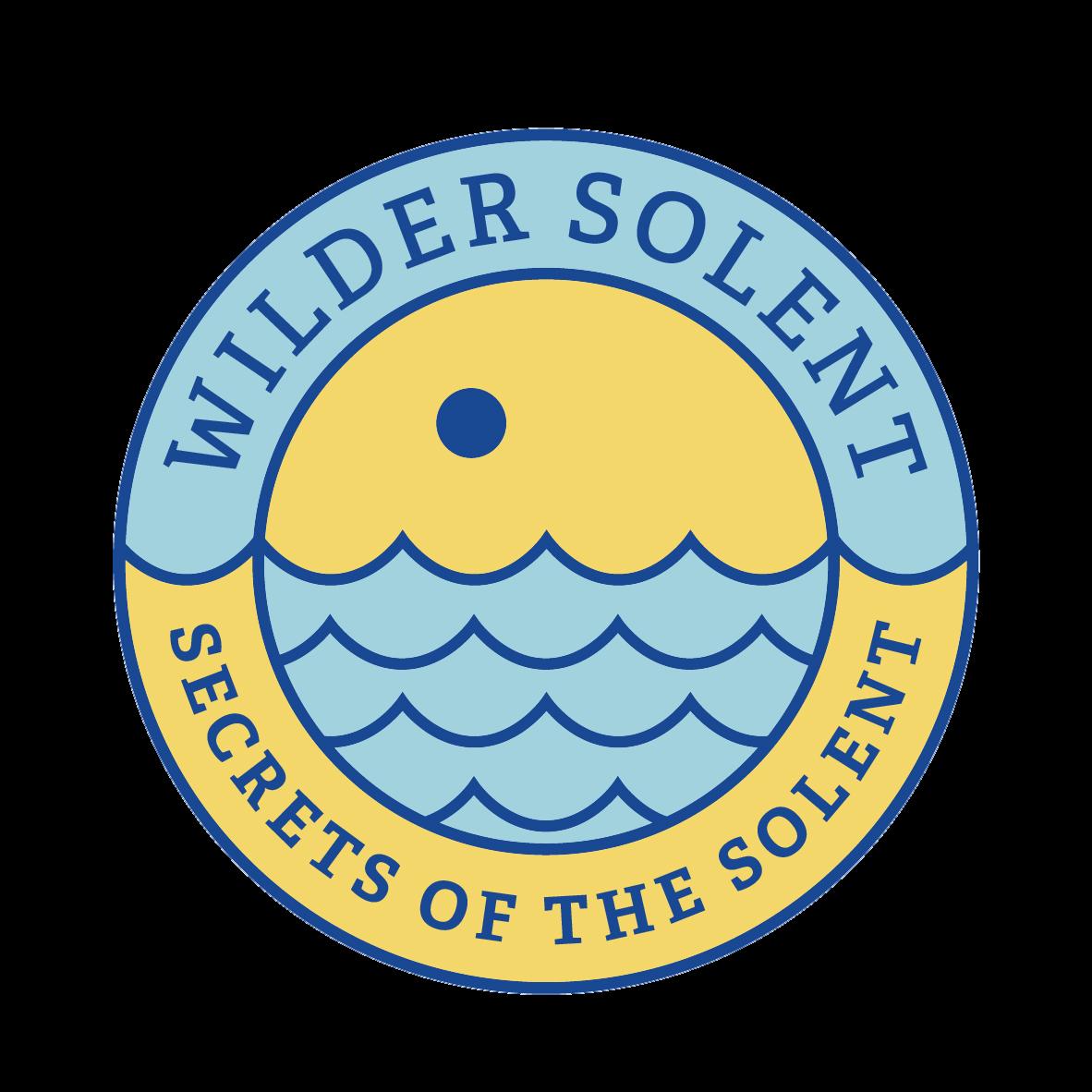SECRETS OF THE SOLENT
 Ryde Pier - Emily Stroud
Ryde Pier - Emily Stroud

 Ryde Pier - Emily Stroud
Ryde Pier - Emily Stroud
Most people imagine our murky waters to be lacking diverse and unusual or rare species typically associated with more exotic seas. But in fact, UK coastlines do play host to many exciting species as well as important habitats.
The concept of developing this photograph book was inspired by Eric Woodgate one of our Marine Champions and was created by a dedicated group of Marine Champion volunteers from The Hampshire & Isle of Wight Wildlife Trust for the National Lottery Heritage Funded Project ‘Secrets of the Solent’. This photograph book was edited byEricWoodgate, Emily Stroud, Pete Johnstone, Toby Cowell and Laura Rydiard.
During this project, the volunteers learnt more about the Solent’s marine species, habitats and the threats it faces. They wanted to share their findings and passion and ignite a curiosity for this incredible marine area. This book highlights the sites in the Solent area that they feel are special and worth knowing about.
Let us introduce you to the Secrets of the Solent.
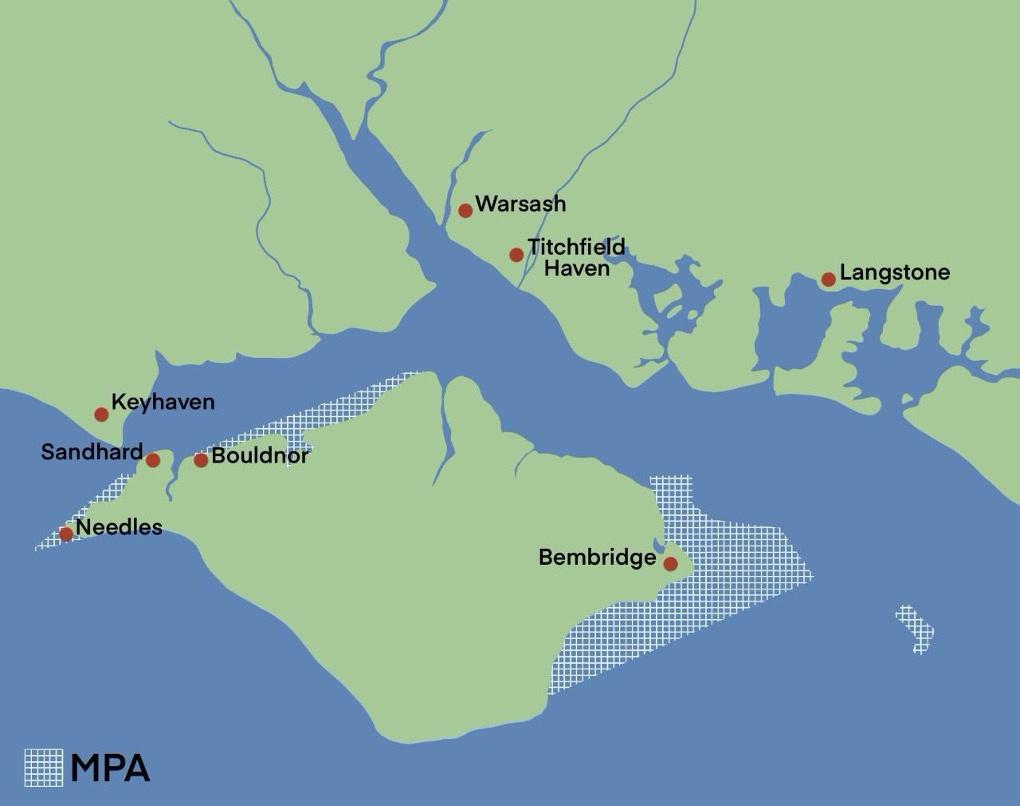
Keyhaven is a hamlet on the Hampshire coast, close to the village of Milford-on-Sea. It dates back to 1206 when the village was a small port on the Solent. A considerable salt industry developed around Keyhaven and Lymington after the Conquest.
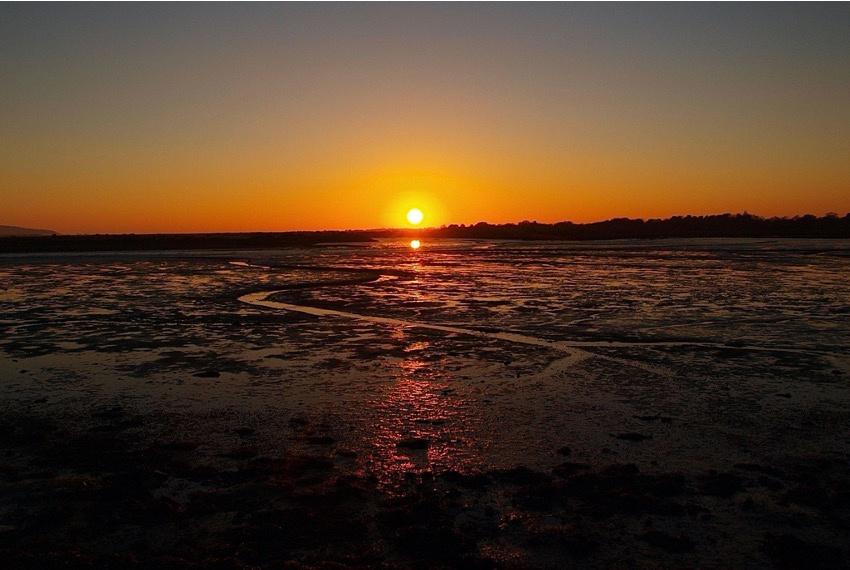 Keyhaven Mudflats - Toby Cowell
Keyhaven Mudflats - Toby Cowell
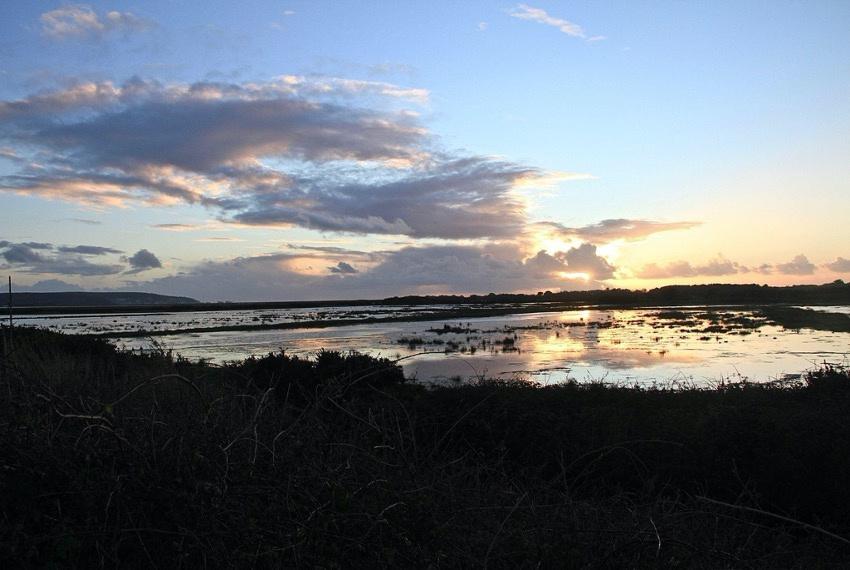 Keyhaven Marsh - Toby Cowell
Keyhaven Marsh - Toby Cowell
By 1400, the industry had declined but was revived in the 17th century with the introduction of new techniques. The remaining salt boiling house from the industry can be seen at Creek Cottage near Lymington. The spit is also home to a working lighthouse, and the area is a draw for walkers because of the views towards the Isle of Wight.
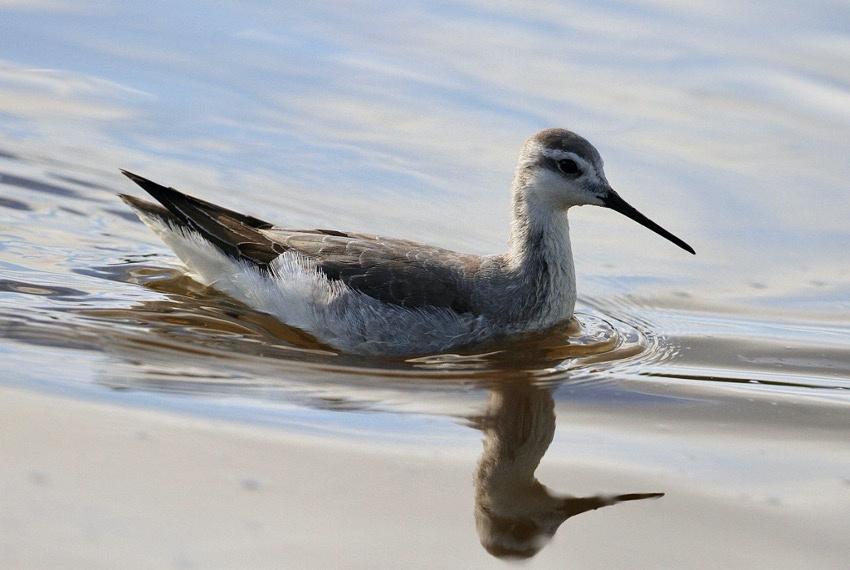
 Lymington Marshes - Toby Cowell
Wilsons Pharalope - Toby Cowell
Lymington Marshes - Toby Cowell
Wilsons Pharalope - Toby Cowell
Bird reserves dominate the coastline between Keyhaven and Lymington, and the hamlet is fronted by the Keyhaven Marshes, a tidal lagoon sheltered by the shingle bank – a rare and protected habitat for unusual coastal plants.
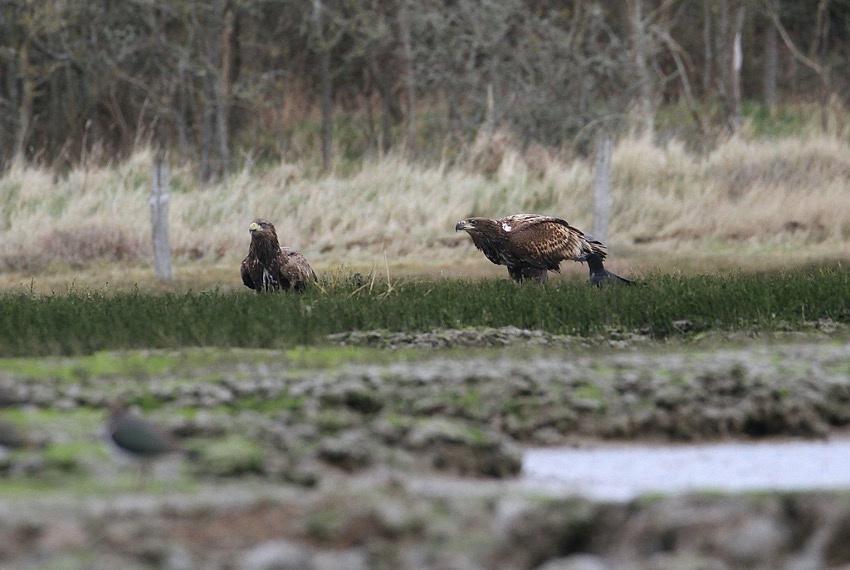 White-tailed sea eagles from the Isle of Wight - Toby Cowell
White-tailed sea eagles from the Isle of Wight - Toby Cowell

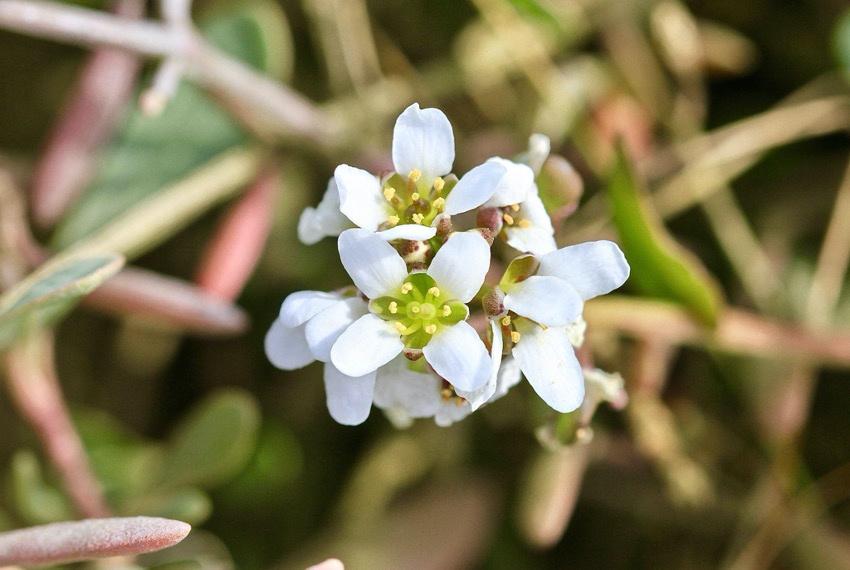 Sea Campion - Toby Cowell
Scurvy Grass - Toby Cowell
Sea Campion - Toby Cowell
Scurvy Grass - Toby Cowell
The name "Keyhaven" actually means "harbour where cows are shipped", as cows and sheep were both shipped to the hamlet from the Isle of Wight and then grazed in the water meadows around Christchurch. Fishing as an industry has declined in the village but still exists on a small scale today with fishing boats moored in the small harbour.
These days Keyhaven is better known for sailing and tourism, but the true value of the place can be seen in its significant area of salt marshes.
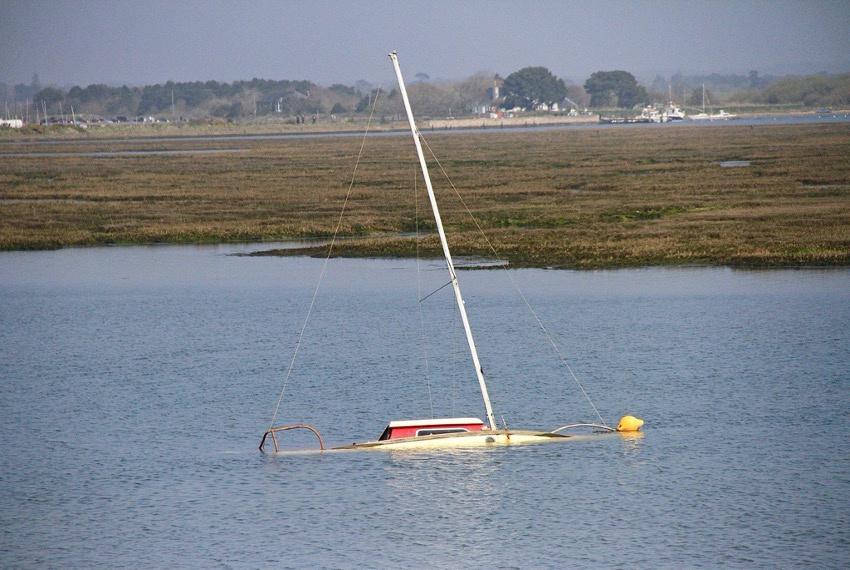 Sunk - Toby Cowell
Sunk - Toby Cowell
Saltmarshes aren't just stunning to look at; they are able to sequester impressive amounts of carbon. This happens when the plants die and get deposited into the sediments instead of decomposing.
 Saltmarsh - Toby Cowell
Saltmarsh - Toby Cowell
In the fight against climate change, these habitats are essential. On a local scale, they also form effective buffers against coastal flooding, a feature that will make them all the more important as time and storm frequency go on.
 Cordgrass - Toby Cowell
Cordgrass - Toby Cowell
The only site for smooth cordgrass in the UK which makes up a lot of the salt marsh saline-resistant plants. It is also one of the few remaining sites for Townsend’s cordgrass and common cordgrass making it a historical and scientific site of interest.
The plant, Samphire, also known as Common Glasswort, is sure to be found at Keyhaven. This plant produces small flowers which are hard to see with the naked eye This succulent plant dies back in the winter, only to emerge again the next spring. It was at one time used to make silica ash for glass production. Today, this edible plant is used to garnish fish dishes and is popular in many gourmet restaurants. It is also an important food source for wildfowl.
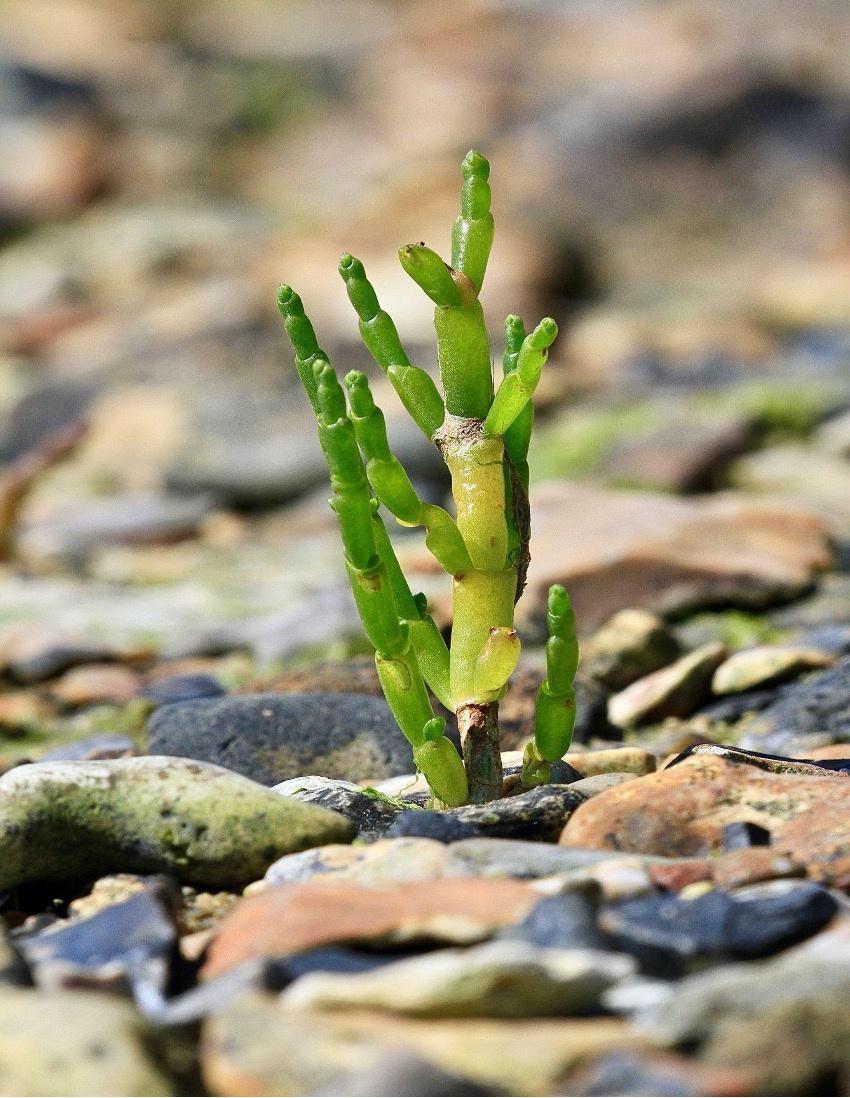 Rock Samphire - Toby Cowell
Rock Samphire - Toby Cowell
Bunches of perennial pink Sea Thrift are found all along UK cliffs between April - July and are also known as Sea Pink or Cliff Clover. It has a preference for well-drained sandy soils and its clusters of pale pink blooms provide a source of nectar for a range of insects. In recent years, Thrift has become less common due to agricultural practices, but, thanks to careful management, this pretty summer flower remains a beautiful sight on our coasts.
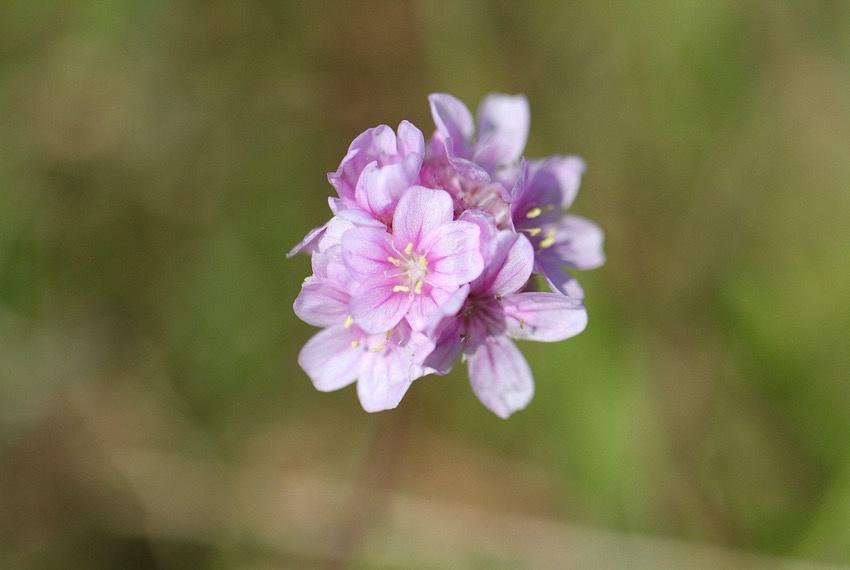 Sea Thrift - Toby Cowell
Sea Thrift - Toby Cowell
Warsash sits at the mouth of the River Hamble. Its short tidal river is crammed with the sailing craft of every description that becomes a highway during the summer as they head out into the Solent.
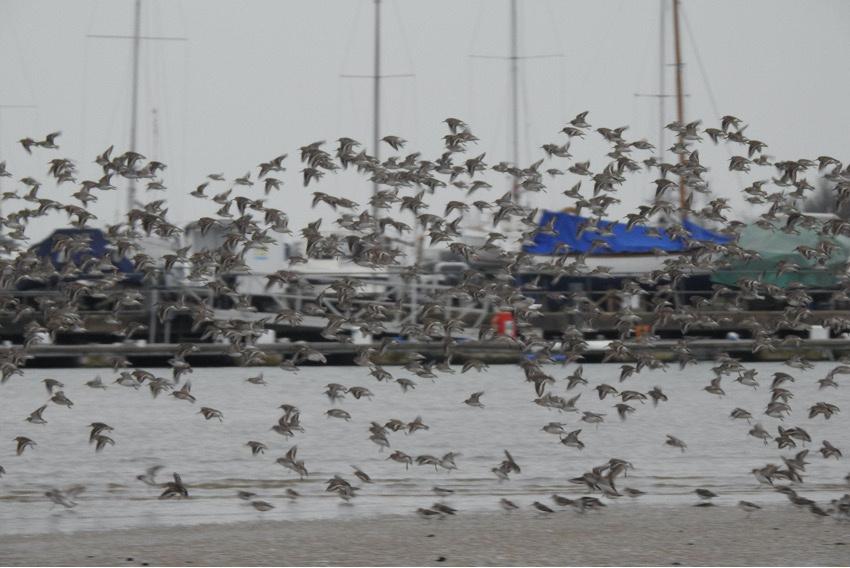 Knots - Robert Seymour
Knots - Robert Seymour
Yet along the river bank and at the harbour mouth, you can find a variety of habitats that attract a wide range of wildlife and flora.
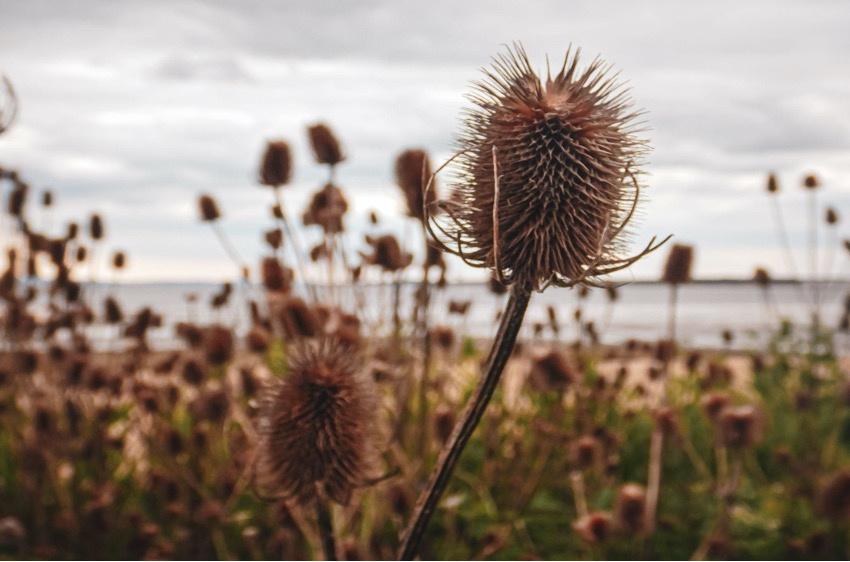 Teasels - Eric Woodgate
Teasels - Eric Woodgate
The Solent is renowned for its protected seabass nurseries and the largest seabass in the country can be found here.
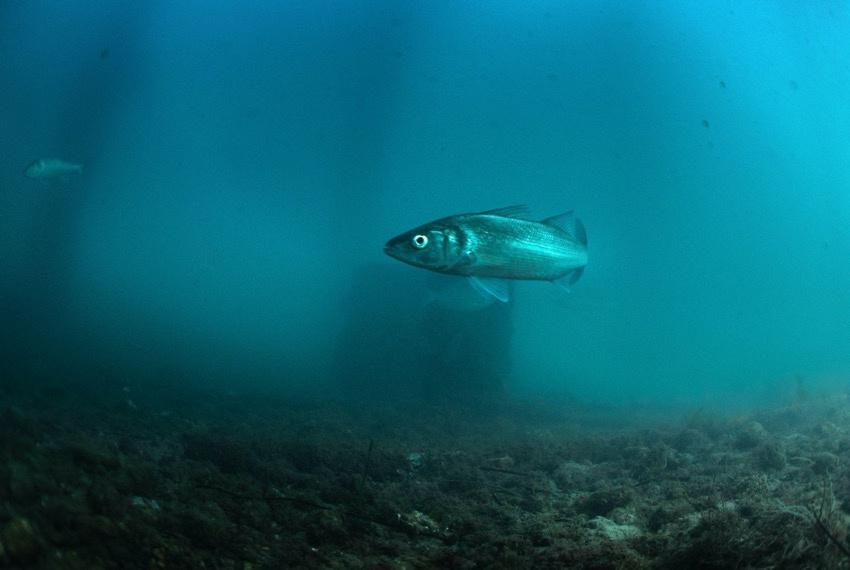 Sea Bass - Theo Vickers
Sea Bass - Theo Vickers
Just east of the river mouth is Hook spit, and its vegetated shingle shore is excellent for observing wading birds, both on the exposed mudflats and the flooded plain. They are also fine beachcombing sites for shells and seaweed, along with the occasional cannonball that has rolled around the Solent for a few hundred years!
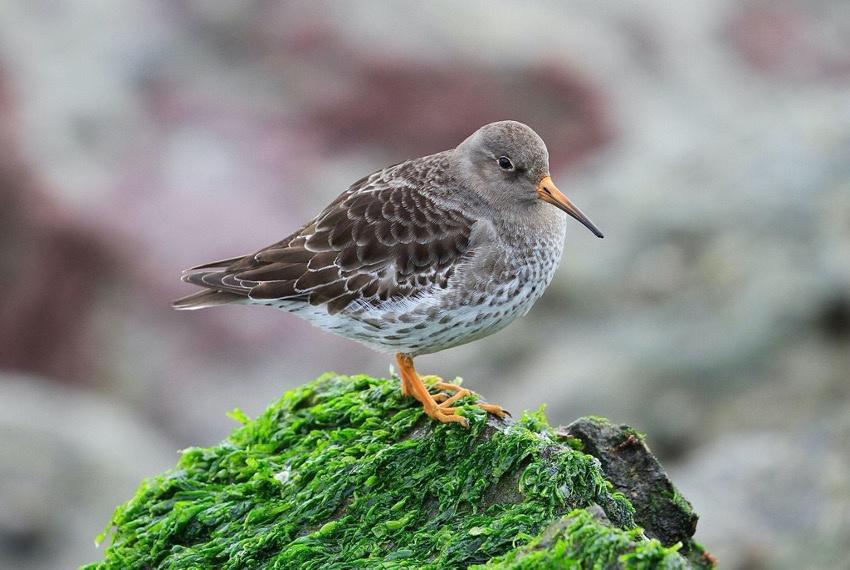 Purple Sandpiper - Toby Cowell
Purple Sandpiper - Toby Cowell
The little fisherman’s quay at Warsash and the car park occupying the site were an important salt pan right up until 1960. But fishing from the Hamble River can be dated back to the days of the Roman occupation when oysters were an important food source that found their way to many of the inland towns like Winchester and Silchester.
Yet as the mudflats on the River Hamble become exposed as the waves retreat, they uncover the vast landscape that perfectly conceals a whole variety of different worms and other creatures.

 Great Scallop - Elaine Hammell
Great Scallop - Elaine Hammell
The great scallop is usually found on sandy gravel beds. It is a filter feeder and a commercially important species. Unfortunately, it is often caught by an extremely damaging fishing technique known as scallop dredging, whilst results in rupturing seabed habitats in the pursuit of these animals.
 Great White Egret - Toby Cowell
Great White Egret - Toby Cowell
It is common for anglers, often bearing a humble garden spade, to eagerly seek out these wrigglers so that they can be used as fishing bait. In particular, lugworm and ragworm species remain firm favourites. Bait digging for personal use is permitted and, indeed, is part of the Magna Carta right to fish. Commercial digging, on the other hand, is illegal within Special Nature Conservation Order areas such as the northern part of Fareham Creek.
Whilst ragworms like to remain hidden in their burrows without a trace, lugworms are less secretive. They gulp down sand and then, pooing it out, they leave behind the tale-tale coiled ‘casts’ on the surface. As a key member of a complex ecosystem, these worms are an important food source for animals such as the wading birds living above them.
Responsible fishermen will only gather what is needed and leave plenty of adult worms that can reproduce. While the holes that these fishermen make in the sediment can scar the landscape, backfilling them again can help maintain the habitat and protect the other intertidal residents. Also, similar is sandy gravel beds, which are the small sediment pieces found on the seabed that is home to a variety of marine species from the coast to the deep sea.
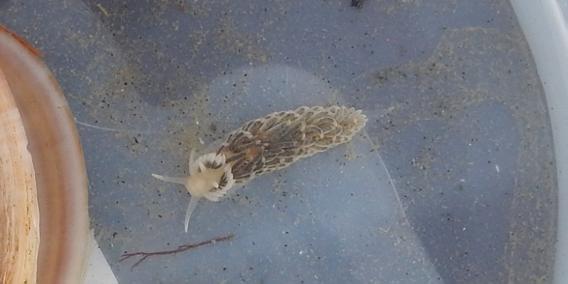
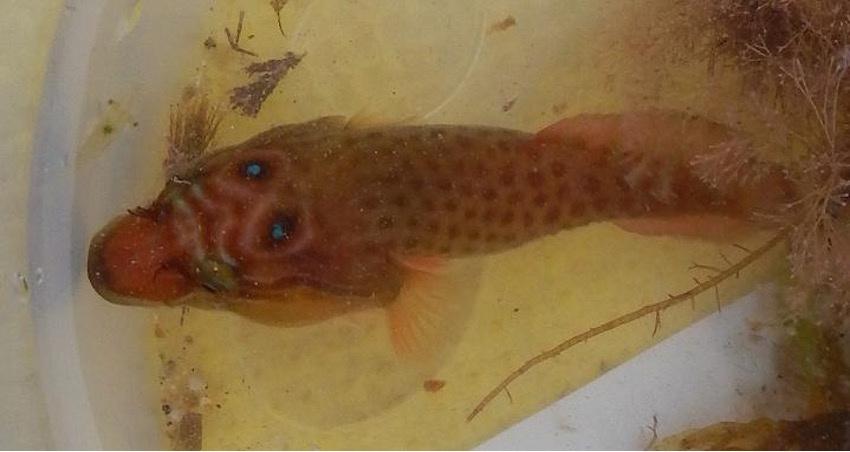 Sea slug Aeolidiella - Elaine Hammell
Clingfish - Elaine Hammell
Sea slug Aeolidiella - Elaine Hammell
Clingfish - Elaine Hammell
This is a dynamic environment: moving sediment; varying exposure to salinity; tidal patterns and nutritionally poor soils all contribute to harsh conditions. Many species are either found primarily underwater or terrestrial, whereas others can tolerate both zones of land and water.
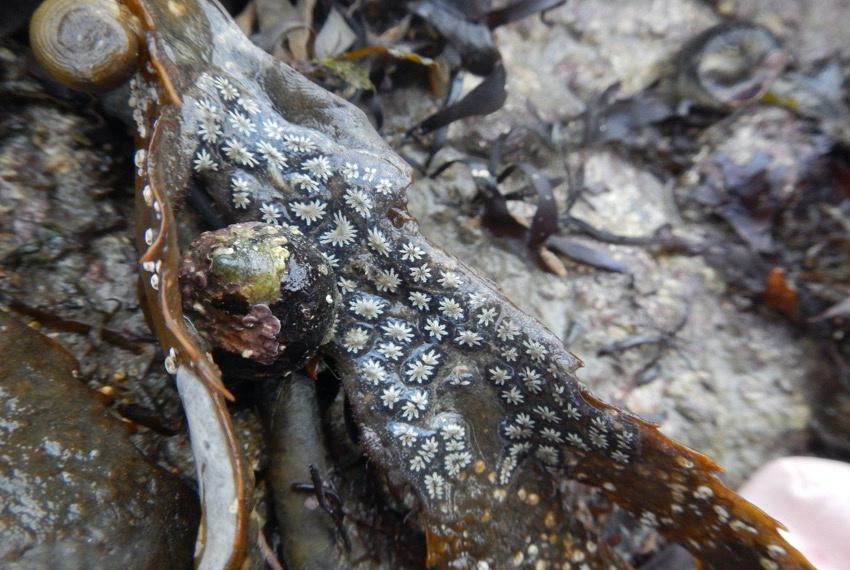 Squirt - Star Schlossi - Elaine Hammell
Squirt - Star Schlossi - Elaine Hammell
 Star fish - Elaine Hammell
Star fish - Elaine Hammell
 Broadclaw Porcelain Crab - Elaine Hammell
Broadclaw Porcelain Crab - Elaine Hammell
Sandy gravel habitats are significantly high in nutrients, encouraging primary productivity, which is essential for breeding and nesting spaces for a variety of species.
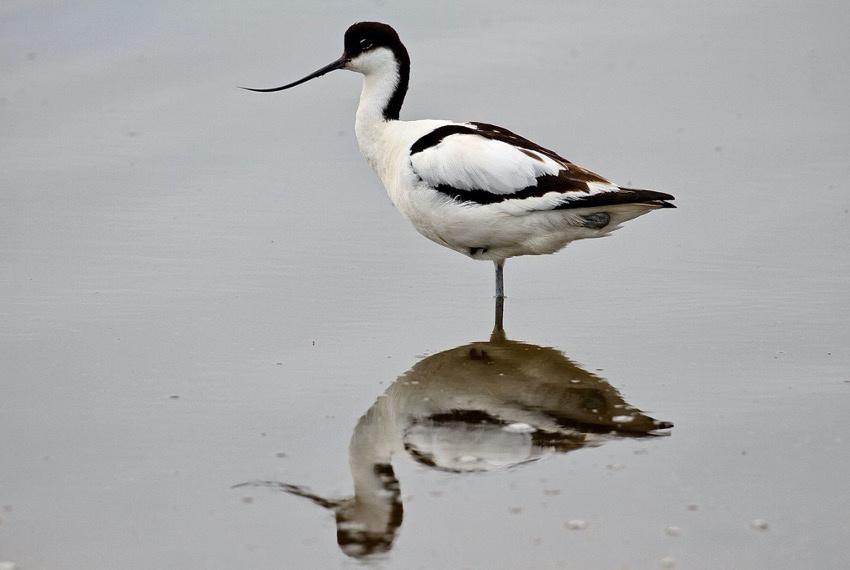 Pied Avocet - Adult - Toby Cowell
Pied Avocet - Adult - Toby Cowell
This habitat is most endangered by aggregated dredging, where the removal of sediment is used primarily for construction and for making concrete, which is also used in coastal infrastructure and development. The high demand for coastal development for marinas and tourism alters the seabed's exposure to waves and sediment fluxes, which directly influences the wildlife on sandy gravel beds.
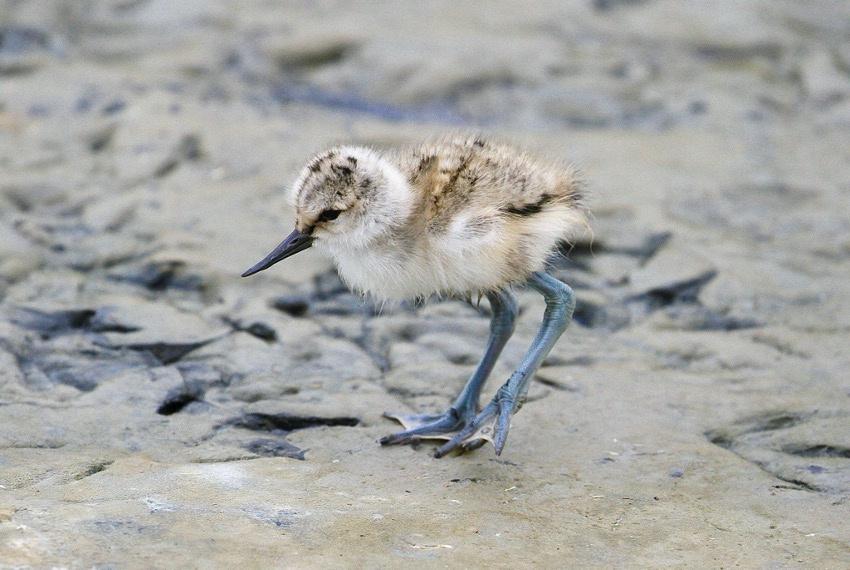 Pied Avocet - Chick - Toby Cowell
Pied Avocet - Chick - Toby Cowell
Titchfield village was once a thriving port a mile or two inland from the Solent, connected to the shore by a mediaeval canal. Today, its name is linked to Titchfield Haven, a National Nature Reserve along the last mile or so of the river Meon before it enters the Solent at Hill Head.
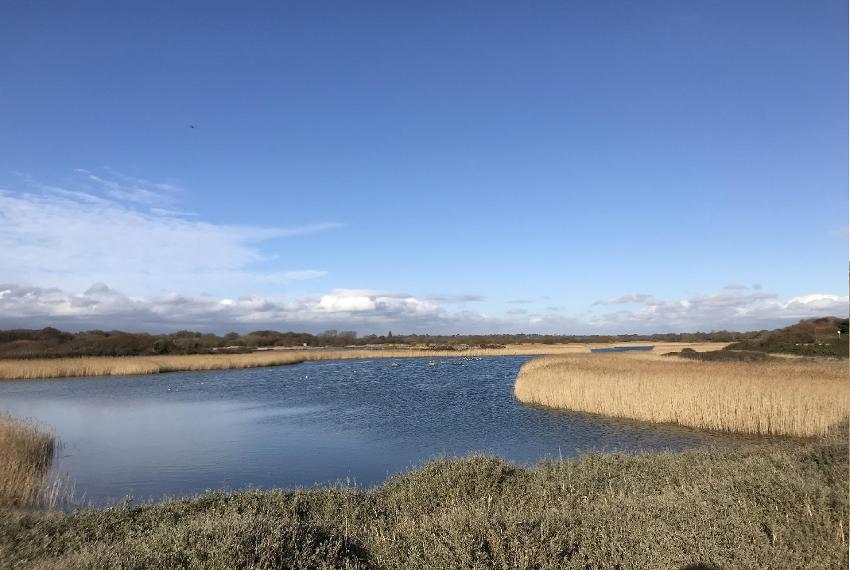 Titchfield Haven Reserve - Robert Seymour
Titchfield Haven Reserve - Robert Seymour
 Fisherman at Titchfield Haven - Eric Woodgate
Fisherman at Titchfield Haven - Eric Woodgate
Titchfield village was once a thriving port a mile or two inland from the Solent, connected to the shore by a mediaeval canal. Today, its name is linked to Titchfield Haven, a National Nature Reserve along the last mile or so of the river Meon before it enters the Solent at Hill Head.
At the mouth of the River Meon, Titchfield Haven National Nature Reserve thrives. Belonging to the Lower Meon Valley, the chalky river comes face to face with the stony shores of the Solent. At certain times of year, there is an abundance of cuttlefish bone and eggs that get washed up on the foreshore. This is a favourite haunt of fishermen along this stretch of coast.
 Life and Death of the Cuttlefish on Meon Shore - Eric Woodgate
Life and Death of the Cuttlefish on Meon Shore - Eric Woodgate
Magnificent sunsets often shimmer over the 369-acre wetland habitat that makes up the reserve.
A mosaic of carefully managed fen, reedbed, and meadow intertwines seductively with the river. Hides are located around the reserve, allowing visitors to gaze at the birds whilst listening to their songs. Each season presents an abundance of rare plants, as well as foxes, deer, dragonflies, and butterflies. In fact, water voles, re-introduced in 2013, can be spotted nibbling their way across the reserve.
In front of Meon Shore is Rainbow Bar, which is the name given to a small gravel spit that occurs adjacent to the tiny harbour of Titchfield Haven Harbour. The site is only uncovered during periods of low water. This site is particularly important with regard to the number of stone-age tools that can be found there when the moving gravel beds expose them.
The foreshore is a shingle beach, which is made up of stones, pebbles, and small rocks. These materials can vary in size from 2 to 200 millimetres in diameter and can be mixed with other sediments such as sand and silt
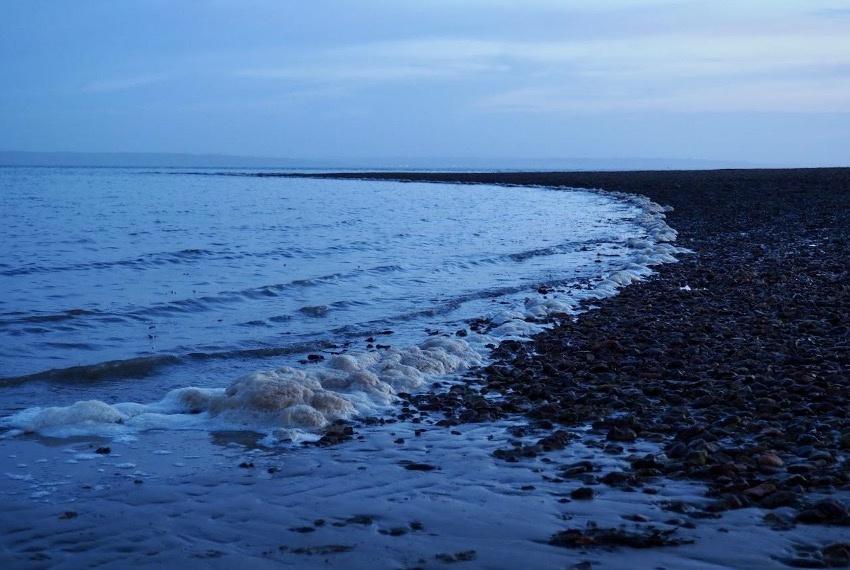
One-third of the UK coastline is bordered by sand or shingle beaches, although much of it is too mobile for plants to grow on.
Vegetated shingle beaches in the UK are of particular global significance. Many different varieties of plants live on the beaches, such as Rock Samphire, Sea Kale, and Yellow Horned Poppies.
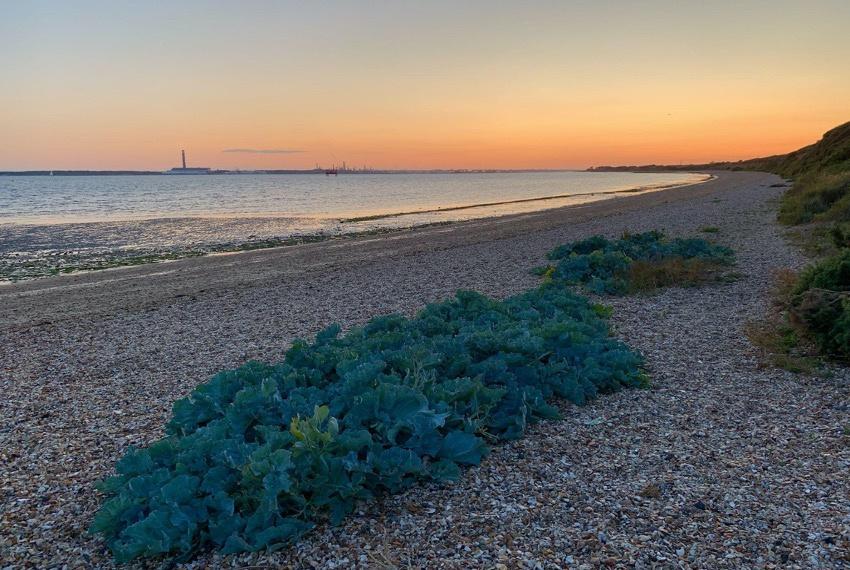 Rainbow Bar - Rebecca Parks
Sea Kale and Sunsets - Rebecca Parks
Rainbow Bar - Rebecca Parks
Sea Kale and Sunsets - Rebecca Parks
The Yellow Horned Poppy is an attractive plant and is a familiar sight along many British coastlines. The plant flowers between June and September on mainly shingle beaches, but also on sand dunes or cliffs.
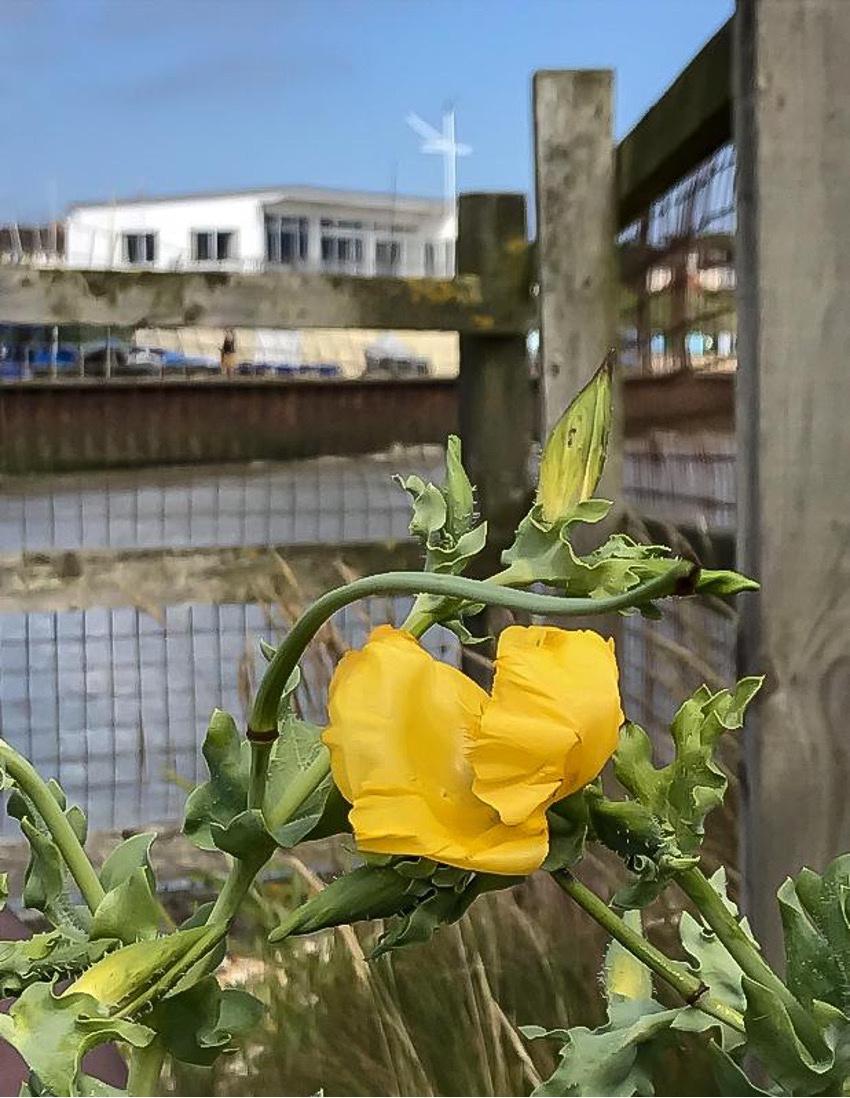
The blueish-grey leaves are deeply cut, with wavy edges. The golden yellow flowers reach a diameter of 9 cm and are followed by smooth slender fruits that can be 30 cm long, which can be eaten by small birds. The stems, if broken, produce a yellow latex-type substance that is highly poisonous.
A small range of invertebrates such as sandhoppers, cockles, lugworms and Sand Mason Worms also live on the beaches.
The Yellow Horned Poppy - Robert Seymour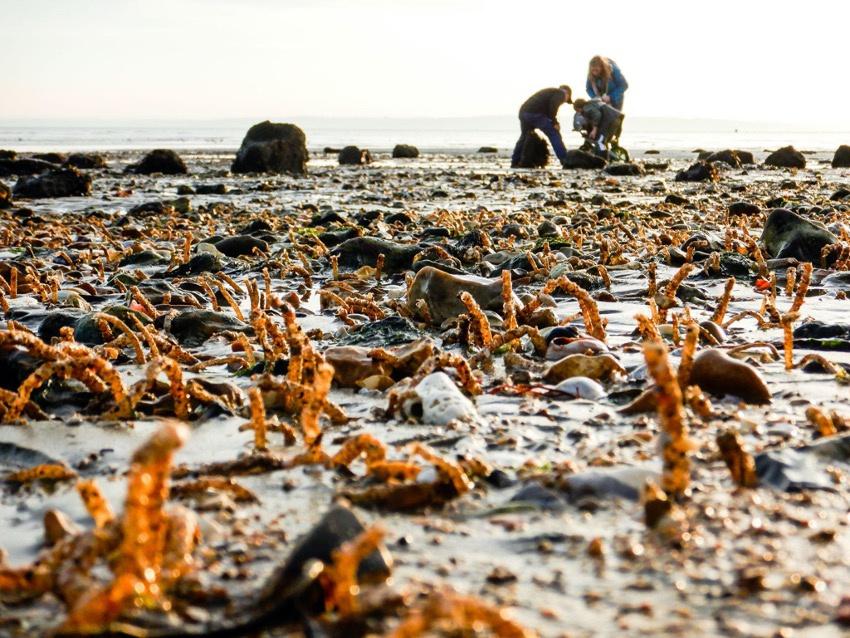 Rock Pooling in a forest of Sand Mason Worm casts - Eric Woodgate
Rock Pooling in a forest of Sand Mason Worm casts - Eric Woodgate
These areas also provide nesting habitats for different bird species, such as Sandwich Terns, Ringed Plovers, and Oystercatchers. Just beyond the shingle beaches and mudflats, several large scrapes have been created that attract large colonies of wading birds and gulls, with particularly important colonies of Lapwings and Terns in the summer.
 Ringed Plover - Toby Cowell
Ringed Plover - Toby Cowell
Winter bird numbers are boosted by several species of geese and ducks. Eider, widgeon, and teal are especially prevalent.
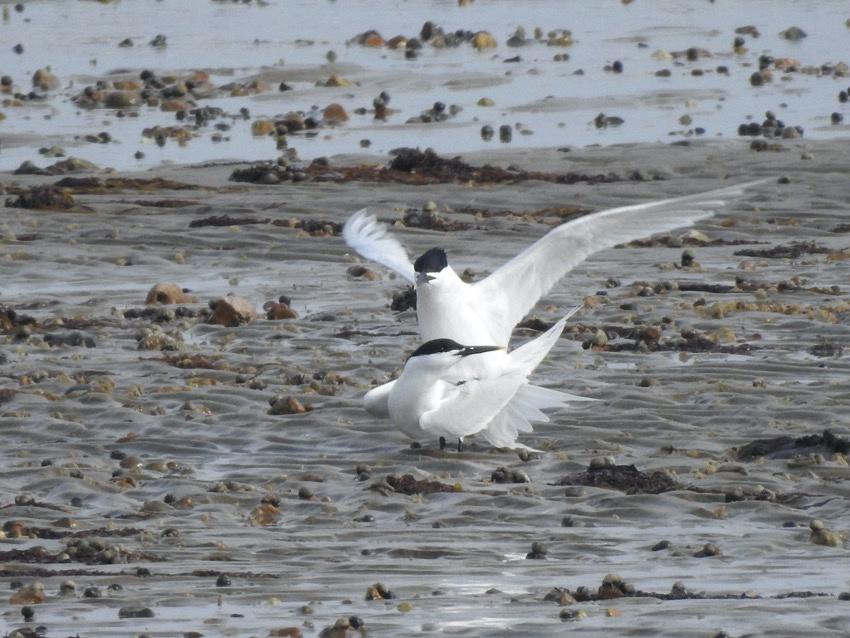 Sandwich Terns - Robert Seymour
Sandwich Terns - Robert Seymour
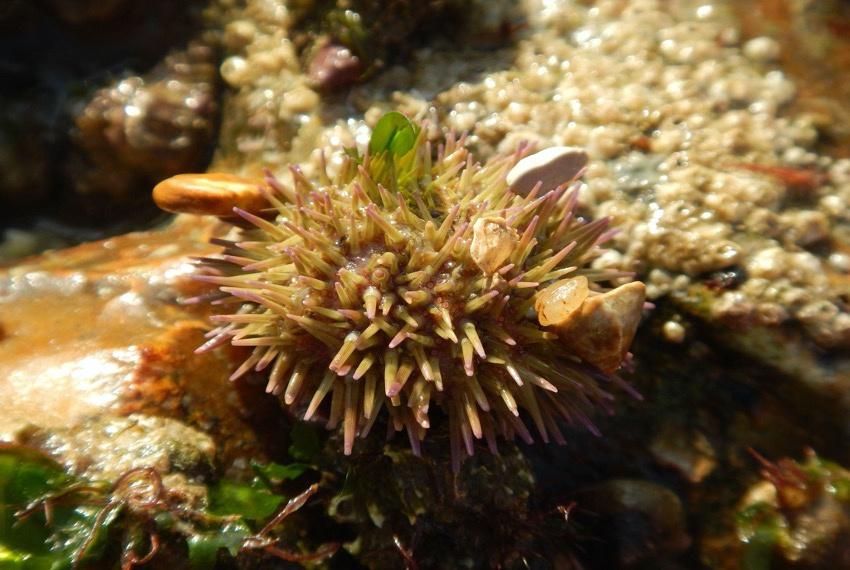
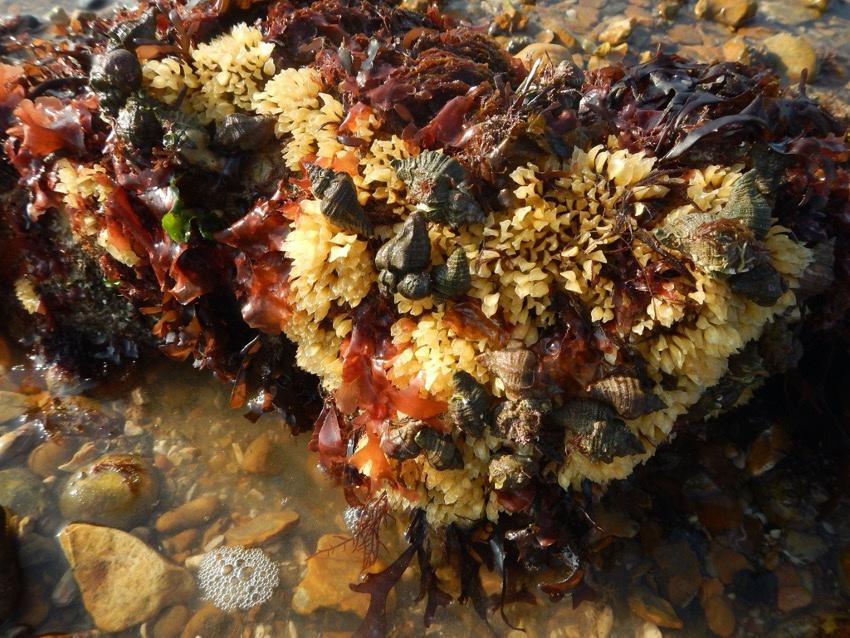 Tingles and eggs - Elaine Hammell
Sea urchin - Elaine Hammell
Tingles and eggs - Elaine Hammell
Sea urchin - Elaine Hammell
These birds are well suited to picking their way across the exposed mudflats on their tall spindly legs, using their long sharp bills to probe into the sediment in search of marine worms and molluscs to eat. Iconic birds to see on our beaches include the Oystercatchers, with their striking black and white plumage and bright orange bills, which are known to lay their eggs directly on the shingle.
Our mudflats also make incredibly important feeding destinations for wading birds overwintering in the UK, needing to replenish their resources after the busy breeding season.
So, it's exciting to know that the variety of wading birds you see on the shore come from all sorts of places, some having migrated long distances for the winter, some having moved over from other habitats, and others remaining resident all year round.
The feeding and breeding patterns of wading birds and many bird species alike are extremely timesensitive, and it is crucial that they are able to stock up sufficiently on their energy reserves in order to fulfil their migrations and breed.
They might also be subject to varying pressures across the world at different points in their seasonal calendar, such as diminishing suitable nesting habitats. Many of these species are now incredibly rare.
It is therefore vital that we help to conserve their feeding grounds on our coast and, whilst they are wonderful to witness, try our utmost to minimise disturbance to their activities by keeping a respectful distance when visiting these precious sites.
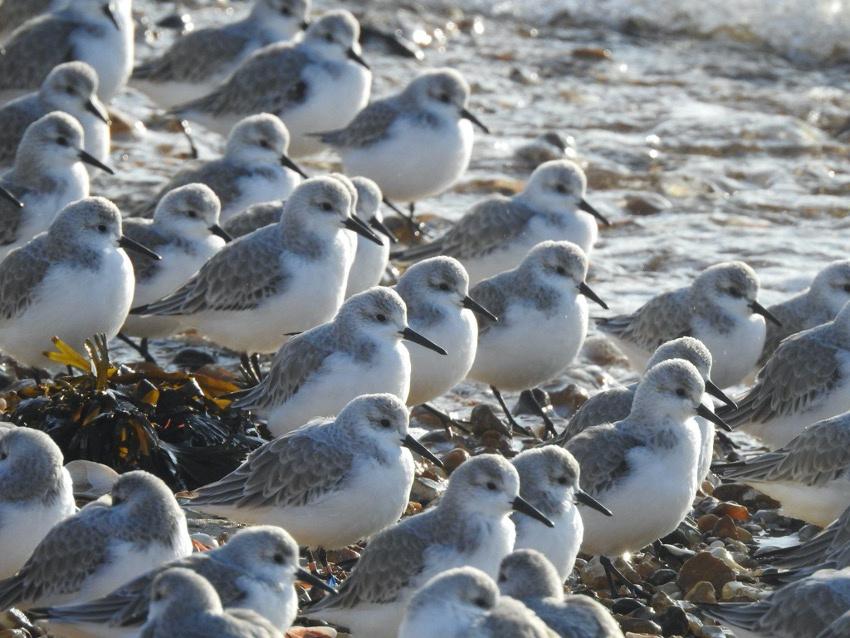
 Turnstones - Robert Seymour
Sanderlings - Robert Seymour
Turnstones - Robert Seymour
Sanderlings - Robert Seymour
Alongside all this abundant wildlife is a centre for human leisure activity, such as paragliding which usually manages to achieve a balance. Windsurfing and, latterly, kitesurfing are much favoured here on a shore exposed to wind arriving unimpeded along the western arm of the Solent.
 Paraglider - Eric Woodgate
Paraglider - Eric Woodgate
Several thriving and more traditional sailing clubs launch from the beach or make use of the pretty little harbour where the Meon rushes through the sea gates at low tide.
A stroll along the shore at any state of the tide is a more relaxed way to enjoy this stretch of the Solent, with a welcome refreshment at the Haven House centre of the nature reserve.
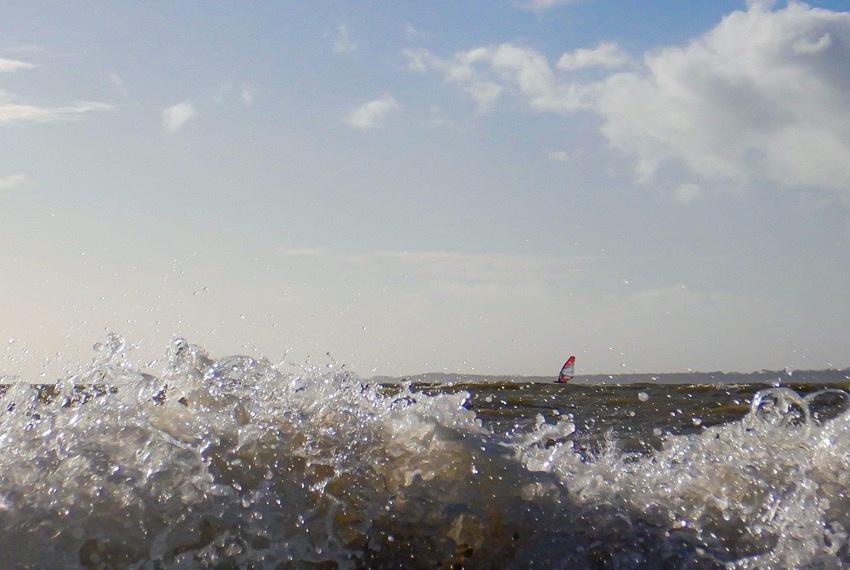 Windsurfer - Eric Woodgate
Windsurfer - Eric Woodgate
Langstone Harbour is renowned for its beauty and is protected by various conservation designations such as SSSI (Site of Special Scientific Interest), RAMSAR site, SPA (Special Protection Area) and Special areas of conservation regarding its rare saline lagoons. Whilst laying host to a variety of birds and marine life, Langstone is also commercially important as it supports supporting commercial fishing and shipping.
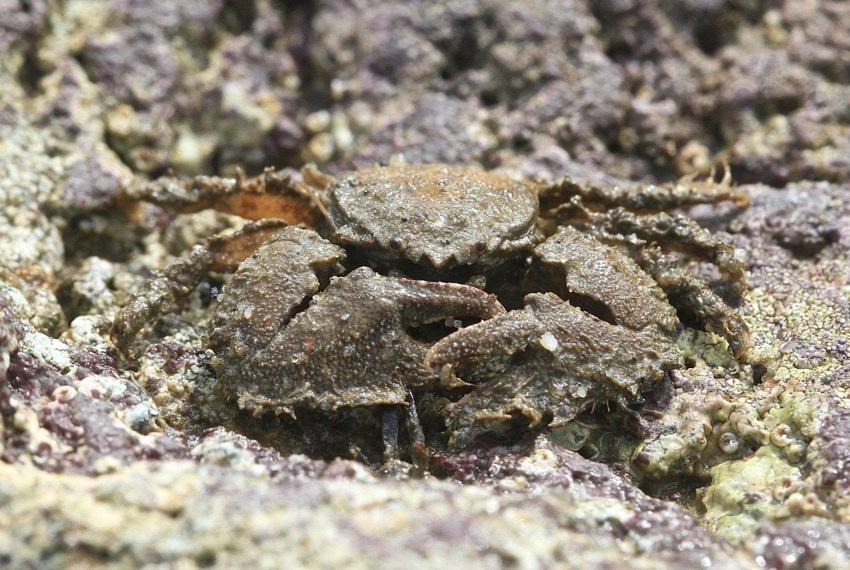 Broadclaw Porcelain Crab - Toby Cowell
Broadclaw Porcelain Crab - Toby Cowell
 Common blenny - Toby Cowell
Common blenny - Toby Cowell
As the human population continues to grow, our interaction with the ocean is becoming increasingly intertwined. In fact, we have the ocean to thank for almost every aspect of our daily lives - from food and energy production to the transport of our necessities from different countries. Indeed, the ocean is our seemingly invincible lifeline and serves much more purpose than a nice day out at the beach.
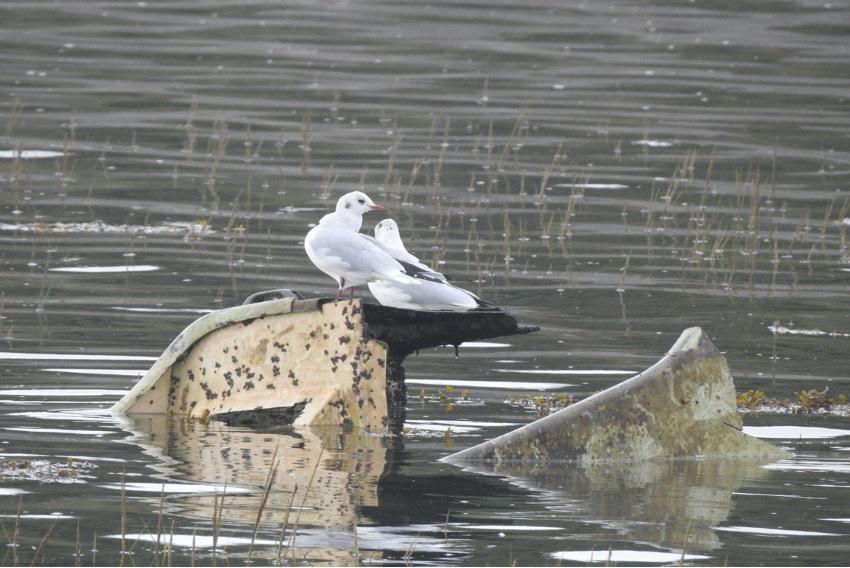 Gulls at rest - Robert Seymour
Gulls at rest - Robert Seymour
However, humans are having an increasingly severe and dangerous effect on our oceans. Many seabeds bear more resemblance to battlegrounds than healthy ecosystems, and it's not uncommon to find more plastic bags than jellyfish drifting through an empty, blue plain.
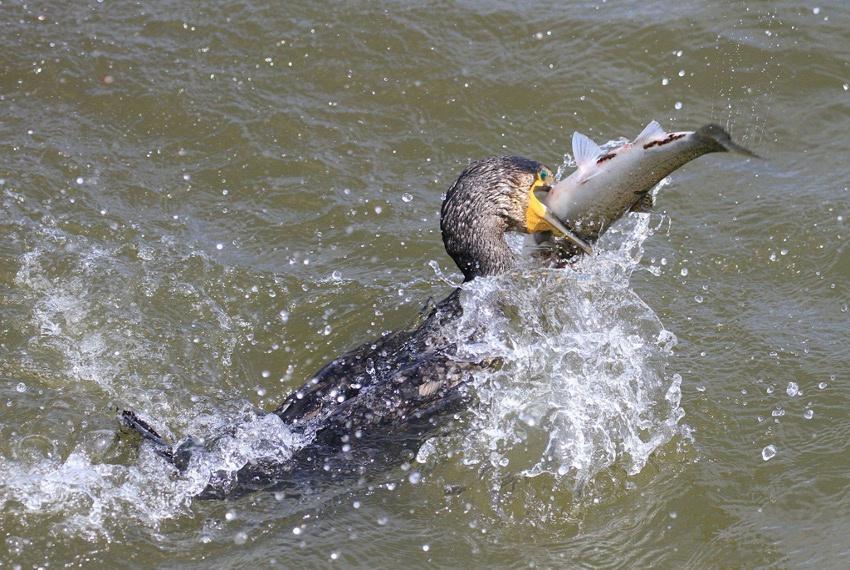 Great Cormorant with fish - Toby Cowell
Great Cormorant with fish - Toby Cowell
An issue that is demonstrated at Langstone is Eutrophication. This word sounds like a daunting scientific term but essentially, eutrophication is an occurrence that occurs when nutrient levels in the water are too high and cause an imbalance between the different life forces. Green-blue algae thrive on the influx of nutrients and consequently grow to form a bloom, covering the waters' surface and preventing oxygen from reaching the fish and other marine life below. This is often caused by run-off from agricultural land, where farmers have applied herbicides and pesticides to their crops. The excess is then washed off into our water systems. Where a build-up of nutrients, such as phosphates and nitrates, occurs in the same place consistently over time, this can result in dead zones, where the area has suffered so much that it is completely devoid of life and the seabed below just becomes a barren wasteland.
This sobering situation reminds us that healthy ecosystems are all about balance. Nutrients are essential for life. Algae are an essential part of the marine food web, but in too high a quantity they will throw the system out of order, take over and suffocate the surrounding life.
The positive take home is that, provided these stressors are reduced and managed, marine ecosystems are known to bounce back incredibly well and thrive again.
Common seals are one of two seal species that live in the UK and our a common sight at Langstone Harbour. When they are not fishing, they are usually found on estuaries and sheltered shorelines, where they haul out on sandbanks and beaches.
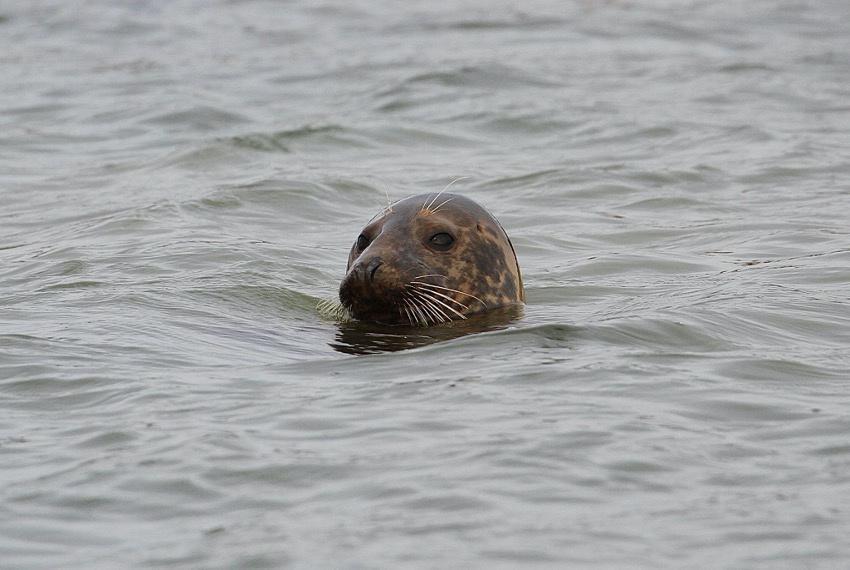
They feed on a variety of fish and can travel up to 50 km from their haul-out sites to find food. They are distinguished from the Grey Seal by their smaller size, smaller head, and less pointed nose.
They are also called "Harbour seals" since they used to be common in ship harbours and ports 30% of the European population can be found in the UK.
Common seals face many threats, including entanglement in fishing nets, pollution, and disturbance from human activities.
To help protect seals, it is advised to keep a distance of at least 100 metres from them both on land and at sea and to leave them alone when they are on their haul-out sites.
Grey seal - Toby CowellThe Isle of Wight UNESCO Biosphere was designated in June 2019. "Each UNESCO Biosphere Reserve is an open sky laboratory for sustainable development, for concrete and lasting solutions, for innovation and good practices. They seal a new alliance between the world of science and youth, between humans and the environment.” -
UNESCO Director General, Audrey Azoulay
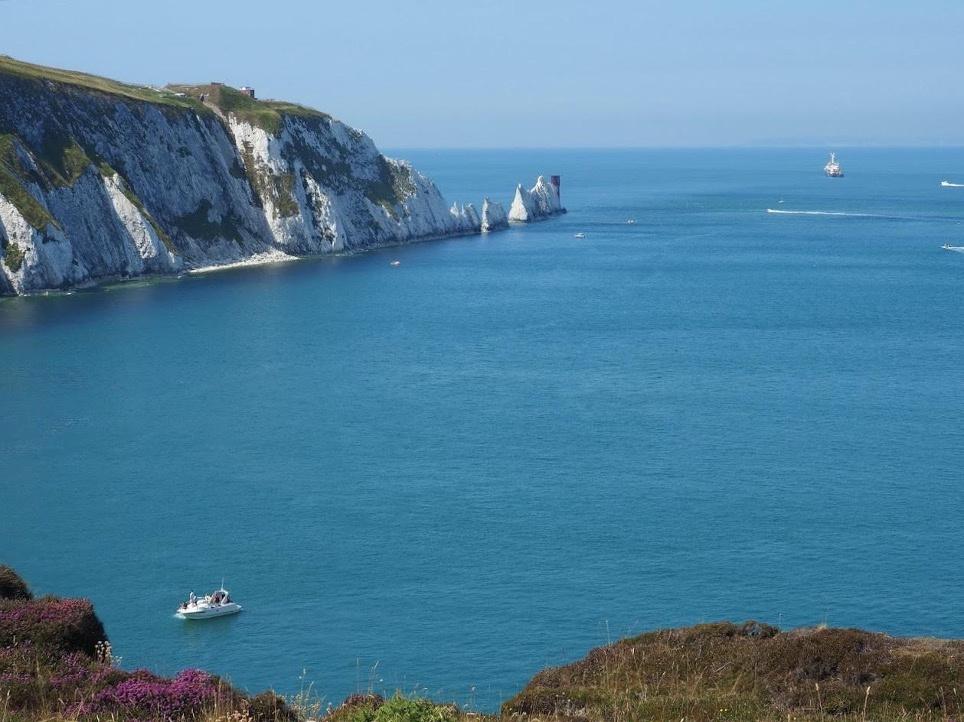 Needles - Rebecca Parks
Needles - Rebecca Parks
Whilst being the largest village in England, Bembridge is renowned for it’s iconic lifeboat station and diverse rocky ledges that play host to a variety of wonderful marine species such as stalked jellyfish and Velvet swimming crabs. They are an incredible place for snorkelling adventures.
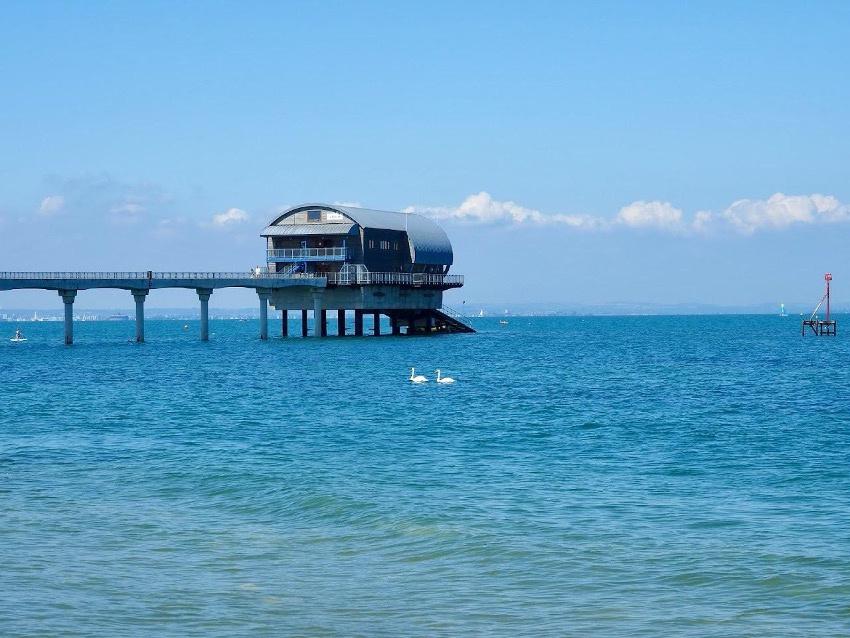 Bembridge lifeboat station - Rebecca Parks
Bembridge lifeboat station - Rebecca Parks
Bembridge Harbour is an SSSI and the nearby Brading Marshes are home to the first RSPB Site on the island.
 Part of Bembridge Ledge - Laura Rydiard
Part of Bembridge Ledge - Laura Rydiard
This Marine Conservation Zone has been described as the "jewel" in the network, as it has more species and habitats eligible for protection than any other. Its shallow waters contain seagrass beds, which provide a habitat for many species like cuttlefish, stalked jellyfish, and seahorses, as well as many other important species.
 Cuttlefish eggs - Eric Woodgate
Cuttlefish eggs - Eric Woodgate
Further offshore, there are deep water muddy sediments where spoon worms dig burrows and feed from the sediment's surface with their long, tube-like mouthparts.
The site is home to our region's only known marl beds this pink, stony algae form incredibly diverse living reefs, offering habitat to many other species.
 Marl Beds - Laura Rydiard
Marl Beds - Laura Rydiard
Seagrasses are abound here and have some fascinating features. Meadows of this miraculous true marine flowering plant are found on several sites within the Solent.
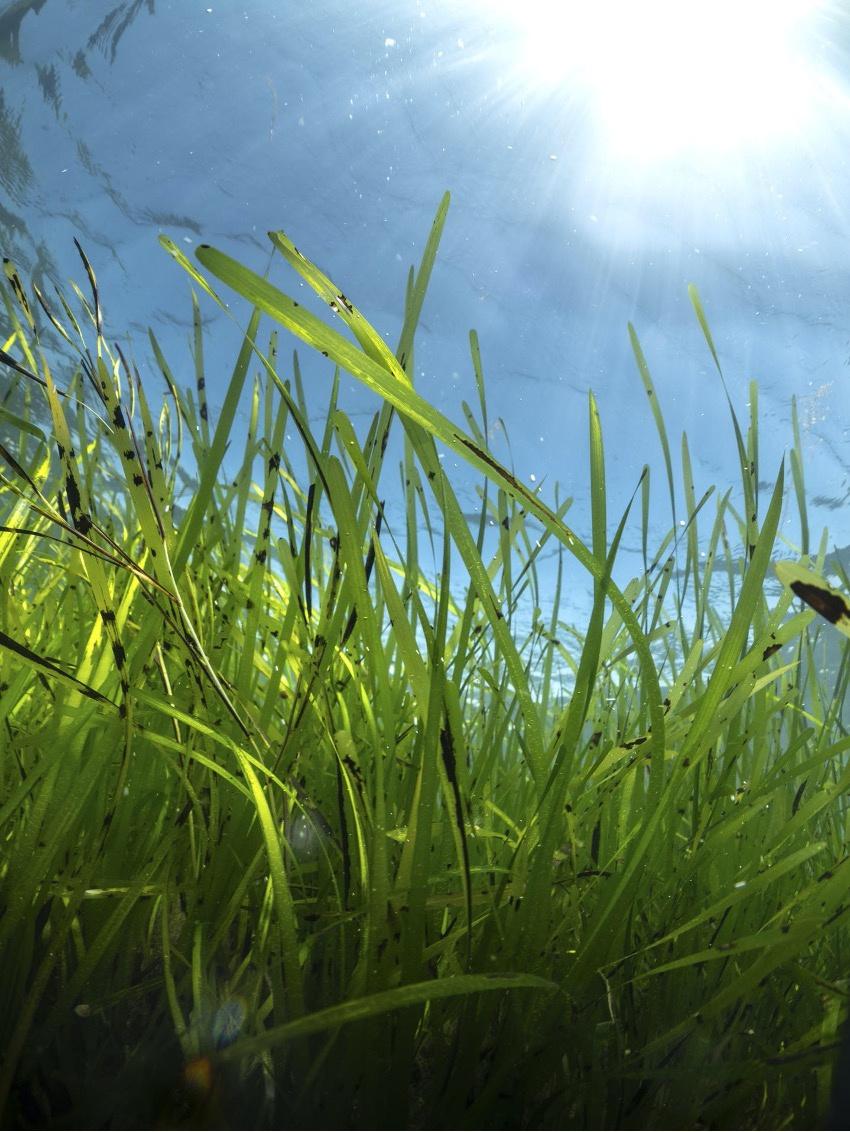
These fronds form a fabulous food source and a great opportunity for shelter. They also give a home to many other species, including the iconic seahorse. The seagrass root system also helps to stabilise the seabed, enhancing natural local sea defences.
Seagrasses are abound here and have some fascinating features. Meadows of this miraculous true marine flowering plant are found on several sites within the Solent. These fronds form a fabulous food source and a great opportunity for shelter. They also give a home to many other species, including the iconic seahorse The seagrass root system also helps to stabilise the seabed, enhancing natural local sea defences.
Perhaps most impressively, though, this plant system is a valuable carbon sink, taking carbon out of the atmosphere at a greater rate than the planet's rainforests*. Seagrass is, however, an extremely fragile habitat which has been affected by disease and is vulnerable to damaging human activities. So, with great enthusiasm, we must protect and restore our seagrass beds.
Seagrass - Theo VickersWhen we think of carbon stores, our minds usually jump straight to vast rainforests densely carpeted by shrubs and trees. However, the ocean is, in fact, a major carbon sink and is fundamental to the global carbon cycle. For example, ocean sediments can lock carbon away for thousands of years, while marine plants and animals store considerable amounts of carbon in their tissues, skeletons, and shells.
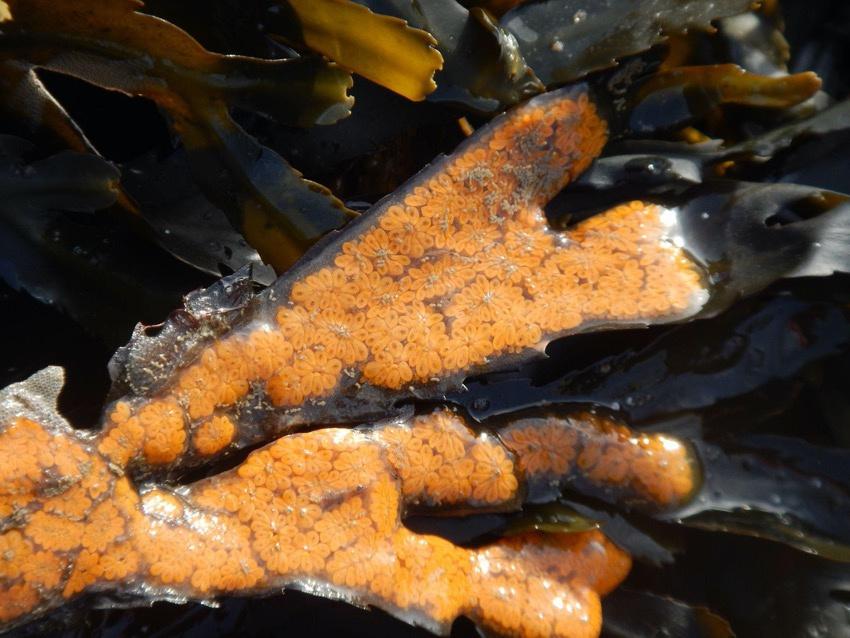 Squirt - Botryllus leachi - Elaine Hammell
Squirt - Botryllus leachi - Elaine Hammell
Collectively, any carbon stored in marine ecosystems is referred to as "blue carbon," and scientists are working tirelessly to reveal how blue carbon may help alleviate the climate crisis.
Coastal habitats are particularly valuable blue carbon stores, sequestering 50% of the global oceanic carbon store despite taking up only 2% of the ocean's space!
Seagrass meadows and saltmarshes are the stars of blue carbon storage, making their rapid declines all the more concerning.
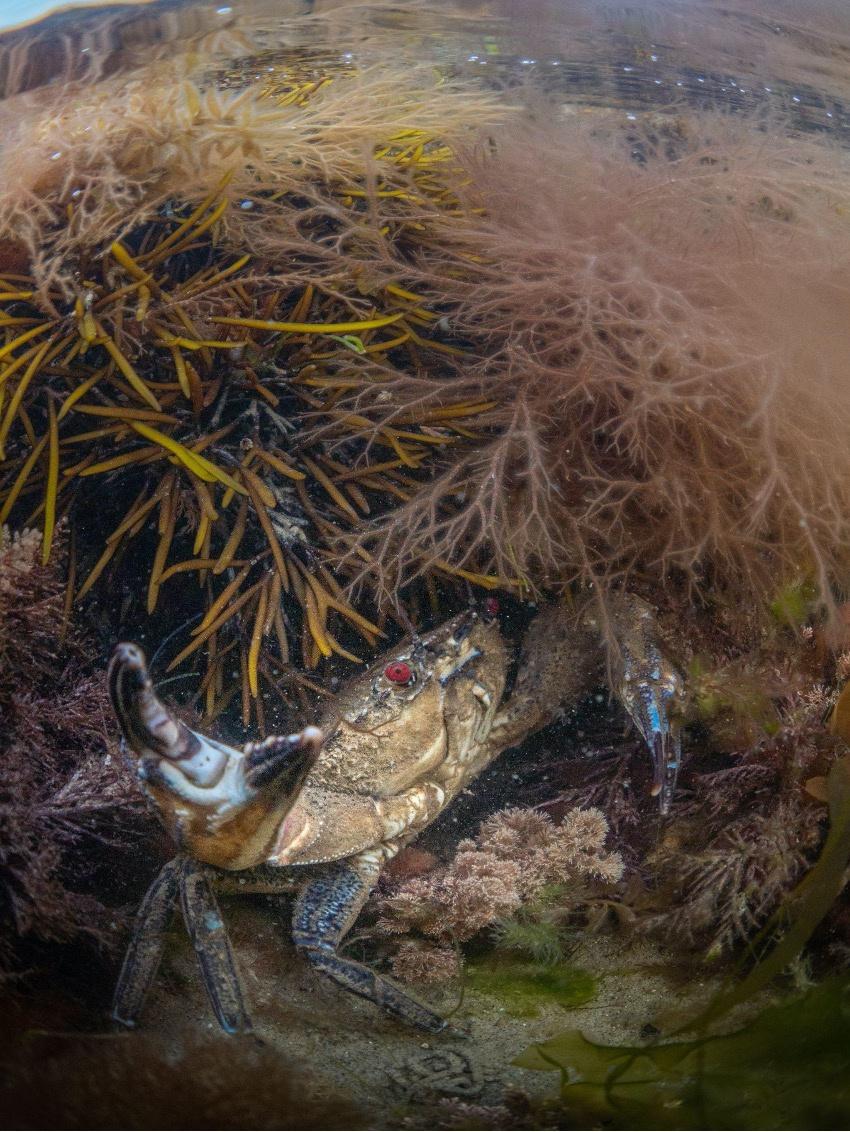 Velvet crab - Theo Vickers
Velvet crab - Theo Vickers
There is also a stalked light-arm jellyfish covered with sting-powered tentacles that give this clever carnivore a way of catching prey and fighting enemies. Happiest in the shallows, this jelly-like animal feeds through a central mouth. Each tiny and translucent individual grows no bigger than a centimetre or two, displaying tones of red, green, or brown.
Two stalked jelly species, living in the waters of Marine Conservation Zones across England, are protected and found at Bembridge Ledges and are now protected by the MPA there.
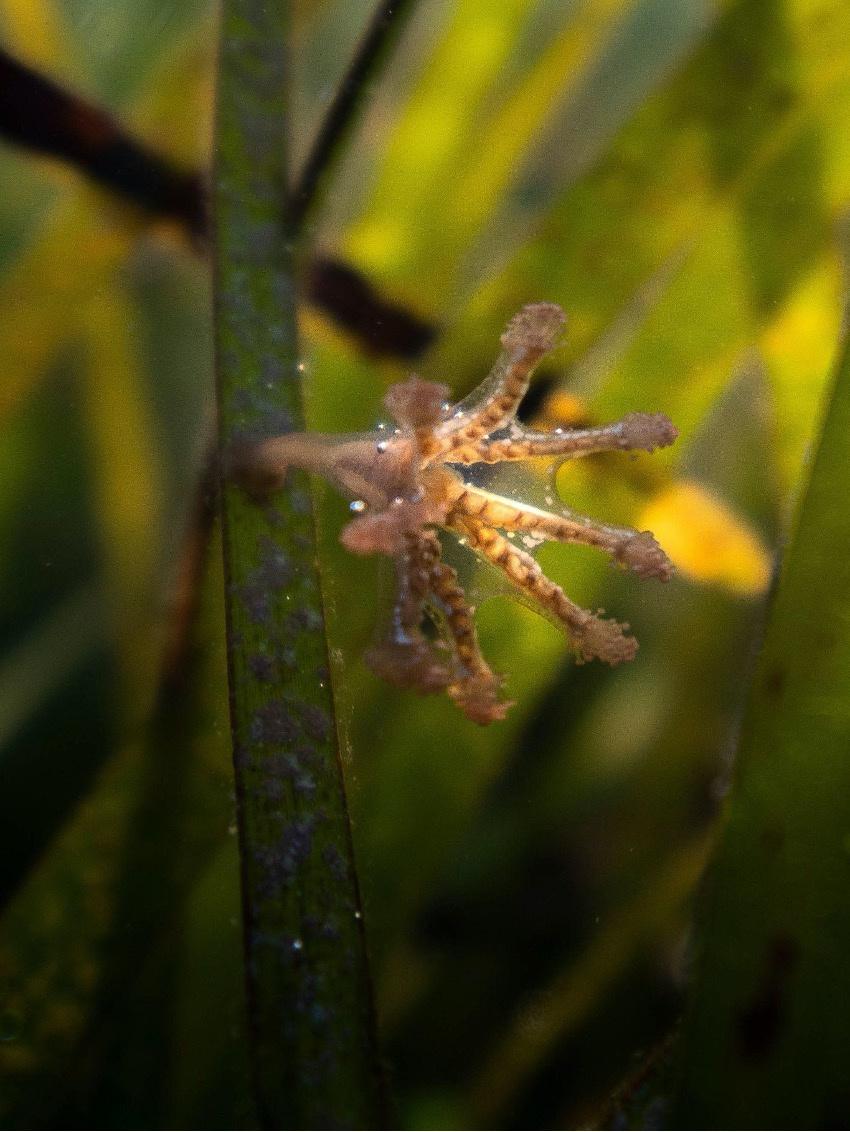 Stalked Jellyfish - Theo Vickers
Stalked Jellyfish - Theo Vickers
 Hurst Castle from Fort Victoria Country Park on the Isle of Wight- Pete Johnstone
Hurst Castle from Fort Victoria Country Park on the Isle of Wight- Pete Johnstone
The Sandhard beach, marsh and small sand dune complex of this area is often overlooked by visitors coming to the busy town of Yarmouth.


In summer, the marsh is a blaze of purple from the sea aster, and in winter, the area is important for feeding waders. Brent geese can often be seen feeding on seagrass just offshore from the beach.
 Sea Lavender on the marsh at Norton Spit - Pete Johnstone
Sea Lavender on the marsh at Norton Spit - Pete Johnstone
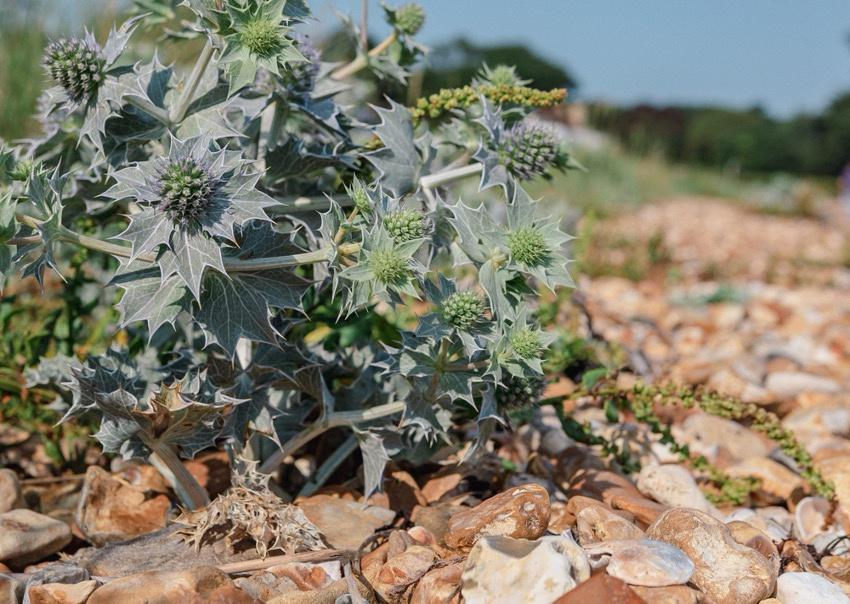 Sea Holly on the shoreline at Norton Spit - Pete Johnstone
Sea Holly on the shoreline at Norton Spit - Pete Johnstone
Within this area, there are limpets. These are closely related to snails and slugs and are found on rocky shores. These ravenous animals are constantly grazing on algae, leaving behind distinctive "scars" where they have worn away rock at the edge of their shell.
When exposed at low tide, limpets clamp their shell down to avoid drying out. When the tide returns, they race to scrape as much algae off the rocks as they can with their spiky tongues (called a radula). Researchers at the University of Portsmouth found that these "spikes", which resemble tiny teeth, are made of the strongest biological material known to humans!
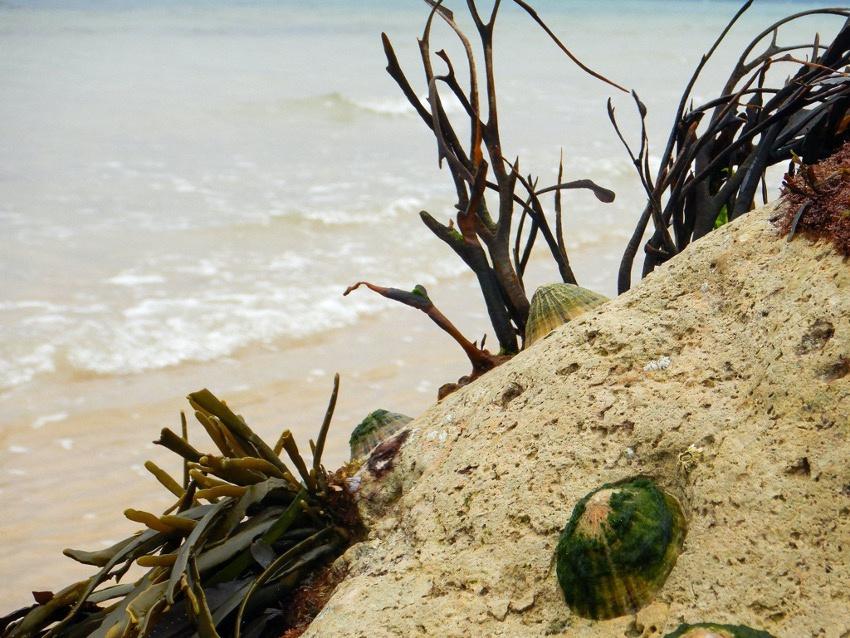 Limpets at rest at Norton Spit - Eric Woodgate
Limpets at rest at Norton Spit - Eric Woodgate
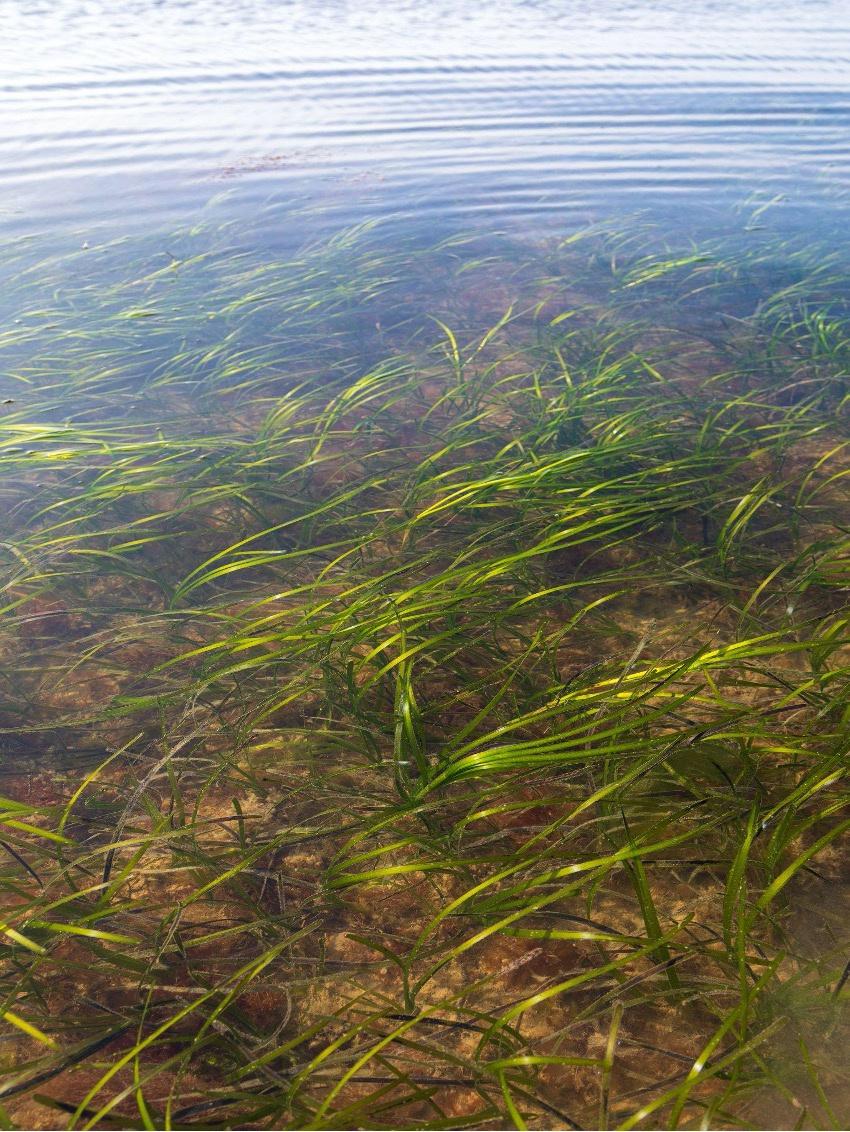
 Seagrass beds off Yarmouth - Pete Johnstone
Seaweed at low tide Norton Spit - Eric Woodgate
Seagrass beds off Yarmouth - Pete Johnstone
Seaweed at low tide Norton Spit - Eric Woodgate
The Needles are a row of three chalk stacks that rise to about 30m on the western tip of the Isle of Wight, close to Alum Bay and are part of Totland, the Westernmost Civil Parish of the Isle of Wight.
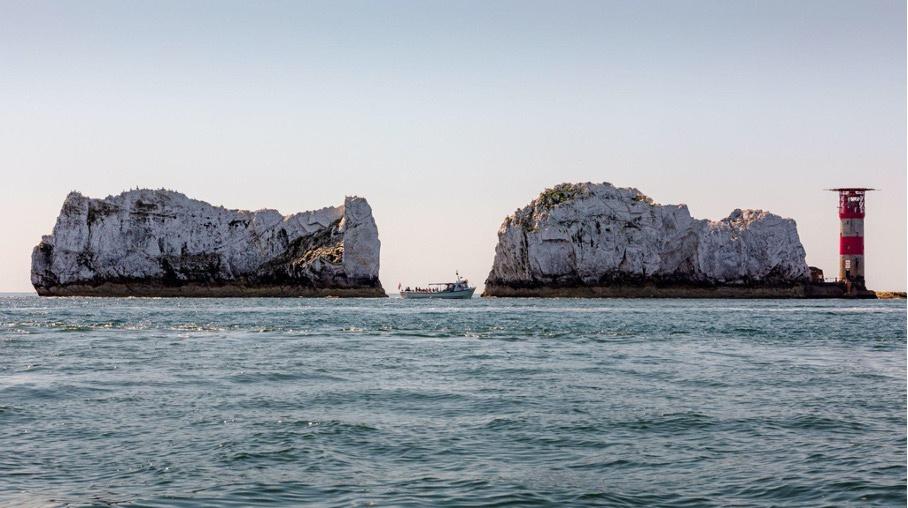 The Needles rocks and recreational boating - Pete Johnstone
The Needles rocks and recreational boating - Pete Johnstone
The name the Needles comes from the fourth rock, which was needle-shaped and known as 'Lot’s Wife’. "Lot's Wife" comes from the Book of Genesis in the Bible, who is turned into a pillar of salt as punishment for looking back after being told not to when she was running from the destruction of Sodom.
At 120ft, it was the tallest rock of the four but was destroyed in a Great Storm in 1764. The Needles Lighthouse, which stands at the western tip of the formation, was built in 1859 and has been automated since 1994.

The Needles was also a site for two artillery batteries, built in 1860 (Old Battery) and 1895 (New Battery) to protect the western end of the Solent against enemy ships. The batteries were eventually decommissioned and the old battery was restored when the National Trust took possession of the site.
The surrounding waters and seabed are part of the Needles Marine Conservation Zone, and the Needles along the shore and heath above are part of the Headon Warren and West High Down Site of Special Scientific Interest.
The Needles Lighthouse - Pete JohnstoneThe Needles and Alum Bay are important tourist destinations as people come to photograph the rocks and lighthouse from boats and from Alum Bay beach, which you can get to from a chairlift that operates from The Needles Landmark Attraction. Marine protected areas, also known as MPAs, are vital to our wider goal of protecting marine life.
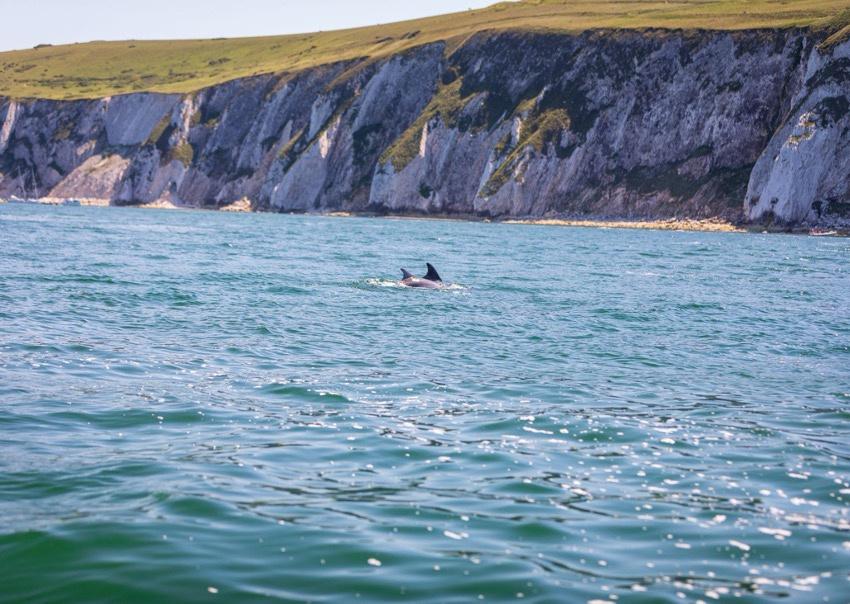 Bottlenosed Dolphins in Alum Bay - Pete Johnstone
Bottlenosed Dolphins in Alum Bay - Pete Johnstone
They are designated by the UK government and have an individual list of strict legal requirements centred around conserving nature, such as restricting fishing activities or seasons.
There are several different types of MPA, which vary slightly depending on their focus For example, special areas of conservation (SACs) are formed to protect individual habitats or species of European importance, while special protected areas (SPAs) generally centre around bird species.
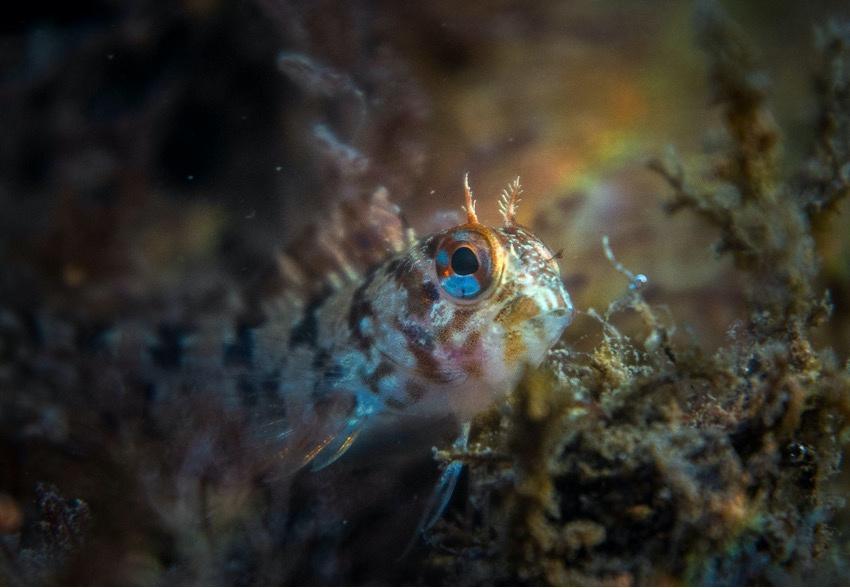
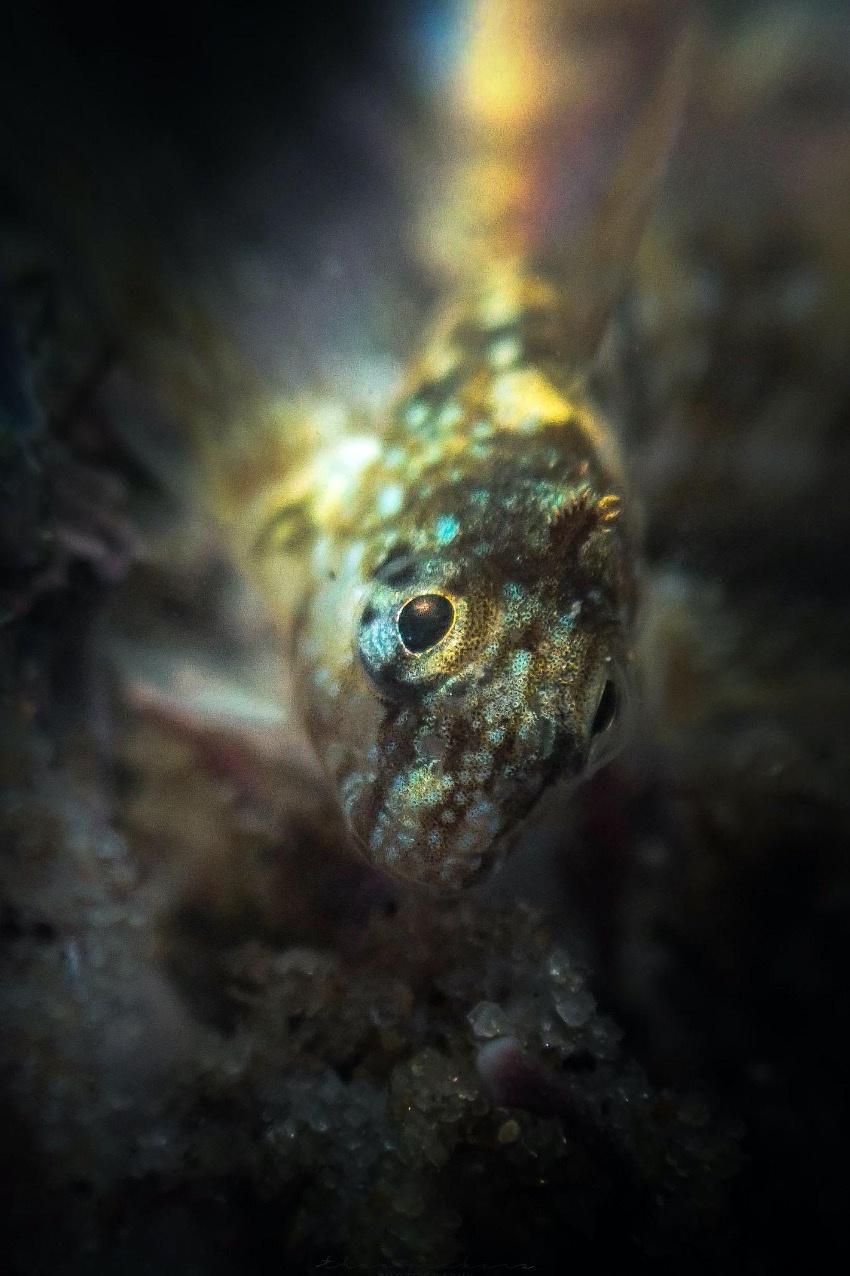 Montagu's Blenny - Theo Vickers
Tompot Blenny - Theo Vickers
Montagu's Blenny - Theo Vickers
Tompot Blenny - Theo Vickers
Reefs are magical marine habitats that protrude from the seabed.
A rocky reef forms as animal and plant communities assemble on the stable surfaces of the rocks and cobbles. Rocky reefs differ from those that are biogenic; cleverly created by their very own inhabitants, such as mussels.
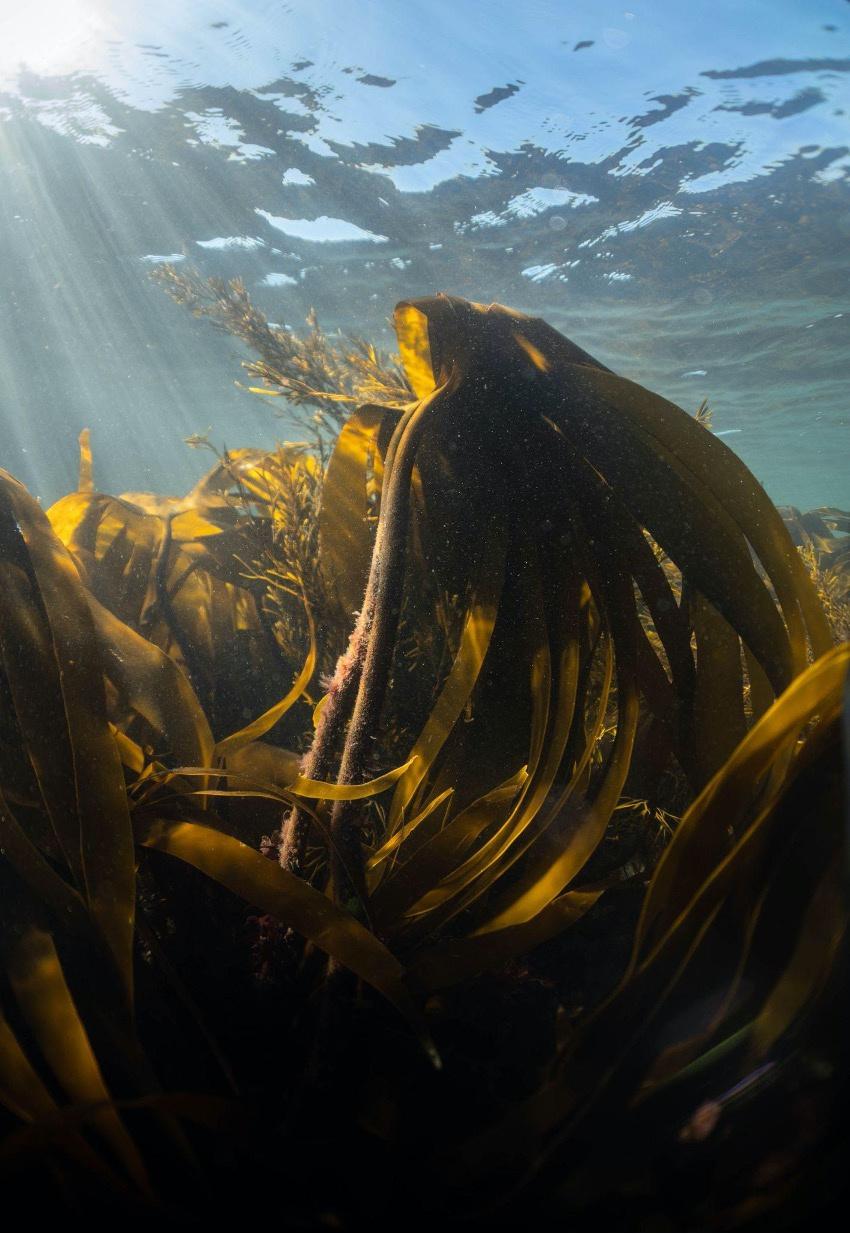
Erosion, bait digging, coastal development, and climate change can all impact sensitive reef environments. Crucially, the Hampshire and IOW regions are home to some of the most important subtidal chalk reefs in the UK.
 Sea Lemon - Theo Vickers
Kelp - Theo Vickers
Sea Lemon - Theo Vickers
Kelp - Theo Vickers
Off the coast of the iconic Needles, an expansive tide-swept chalk reef sits proudly. Its relatives can be found off Culver Cliff and Freshwater Bay. These habitats support a diverse range of both subtidal and intertidal species. Foliose red algae contrast brightly against the rock, alongside an abundance of sponges, soft rock boring worms and piddocks.
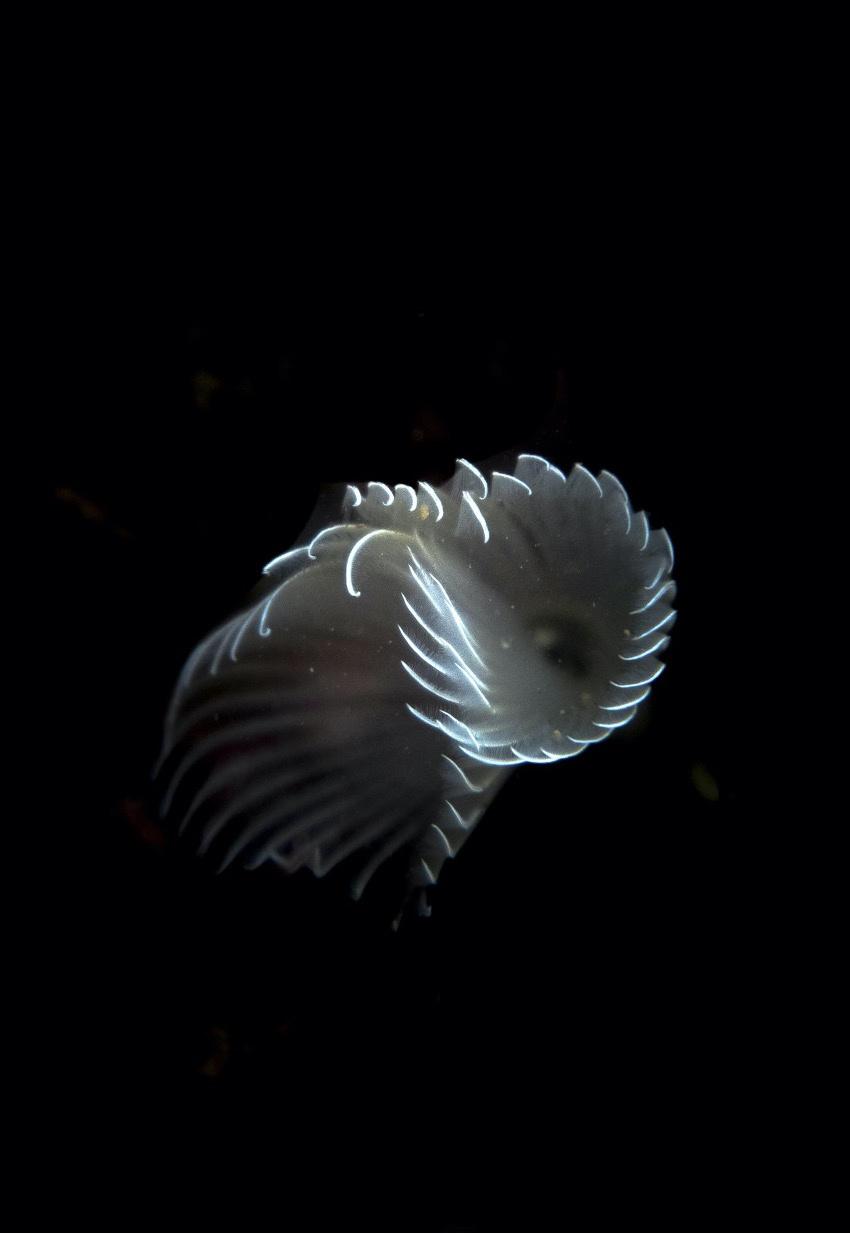 Fan worm - Theo Vickers
Fan worm - Theo Vickers
Seafood is undoubtedly a tasty and nutritious part of the diets of many households. However, if we're to continue enjoying our favourite fishy dishes, it's important to check that our food was caught through sustainable practices –the Marine Conservation Society’s good fish guide is worth checking out in this regard. Activities such as dredging and trawling involve dragging giant contraptions across the seafloor, severely damaging communities of immobile or slowmoving species caught in the wrong place at the wrong time.
 Spider crab - Theo Vickers
Spider crab - Theo Vickers
Similarly, mile-wide nets cast across our oceans greatly disrupt marine communities by trapping non-target species, known as 'bycatch', which usually die or become gravely injured when hauled onto the boat along with their shopbound neighbours.
 Underbolder sponges - Elaine Hammell
Underbolder sponges - Elaine Hammell
Bouldnor Cliff is a remote, natural area of low slumped cliffs and narrow beaches. It is a "wild" area and almost inaccessible apart from the coastal footpath. The action of the sea on the calcareous clays of the cliffs causes frequent landslides and, consequently, a rich variety of plant communities, from pioneer species to woodland.
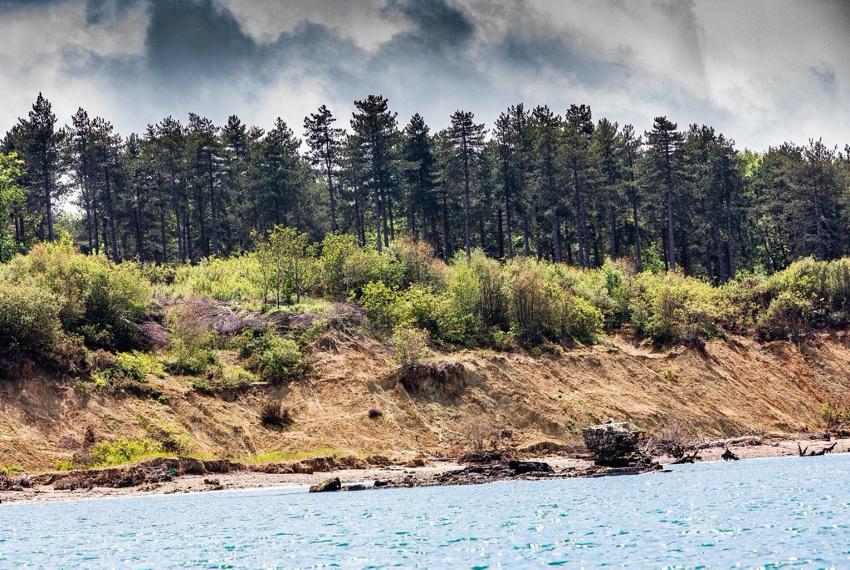 Bouldnor Forest from the Solent - Pete Johnstone
Bouldnor Forest from the Solent - Pete Johnstone
Dead and dying trees from the areas of landslip, plus detritus from the sea, litter the narrow sandy and pebbly beaches, giving a distinctive desert island atmosphere highlighted by the contrast with the views across the Solent, from the New Forest National Park to the industrial developments of Southampton.
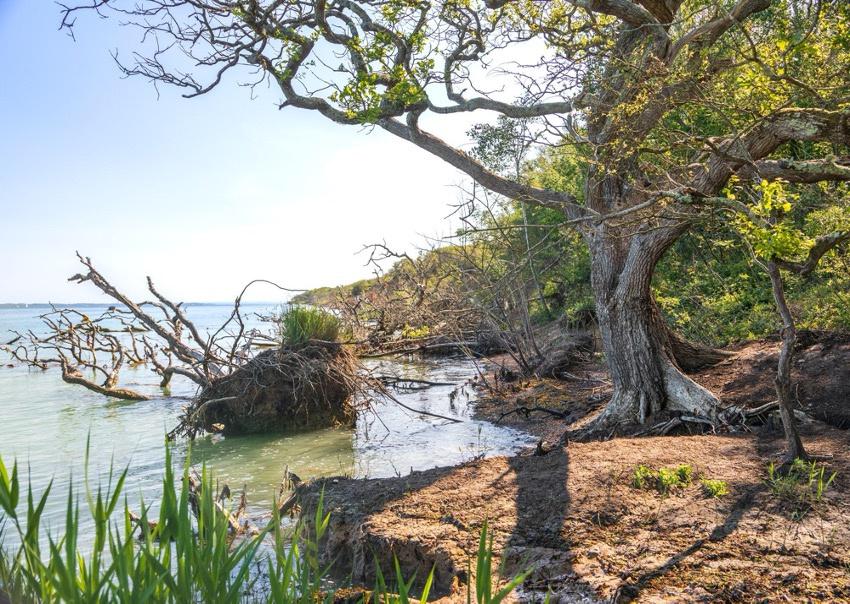
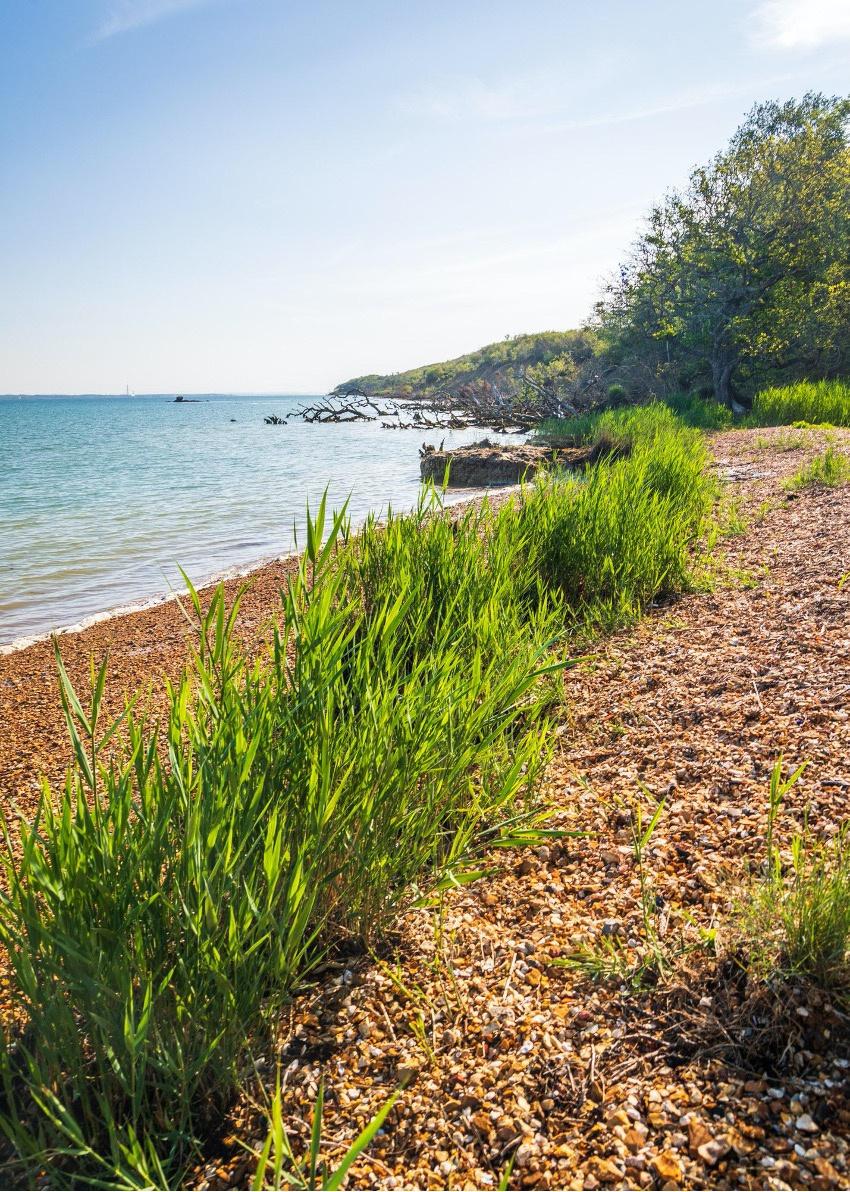 Bouldnor Beach - Pete Johnstone
Bouldnor Beach and eroding shoreline - Pete Johnstone
Bouldnor Beach - Pete Johnstone
Bouldnor Beach and eroding shoreline - Pete Johnstone
Looking at the rugged rocks, golden sands, vast mudflats, and slippery shingles, our coastlines have a compellingly ancient and natural appearance. It's easy to believe they have remained unchanged for centuries. They are actually the victims of constant erosion. Some places are hit harder than others, but on many beaches around the Solent, there are visible signs of real-time erosion.
With the risk of significant imminent sea-level rise and increasingly ferocious stormy waters, coastal erosion is an ever-increasing threat.
We must soon embrace environmental solutions to coastal erosion, working with and enhancing natural defences such as seagrass meadows and shellfish beds.
Many important coastal systems naturally recede over time cliff erode; saltmarshes fall back. Life on the coast needs space to coexist alongside human development. With man-made sea defences and coastal towns encroaching into the blue, these habitats are being squeezed so they no longer have the room for these natural processes to occur and will soon be lost beneath the concrete.
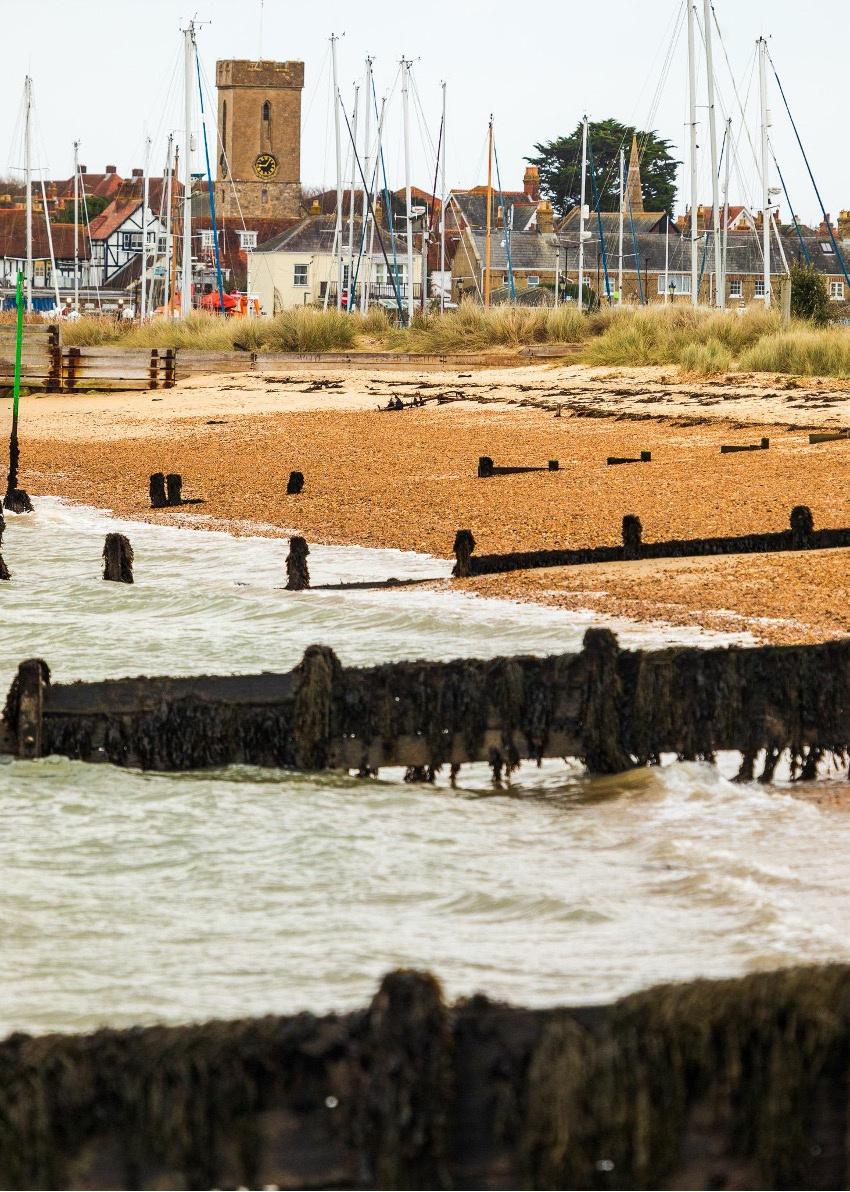
 Norton spit – manmade sea defences - Pete Johnstone
Crab on the beach - Eric Woodgate
Norton spit – manmade sea defences - Pete Johnstone
Crab on the beach - Eric Woodgate
Mudflats, also known as tidal flats, are the hidden stars of coastal habitats. Immersed at high tide and exposed at low tide, mudflats harbour a wealth of biodiversity, including bristle worms, bivalves, and mud snails. This abundance of invertebrates provides a hearty, nutritious meal to entire flocks of wading birds, including shelducks and oystercatchers.
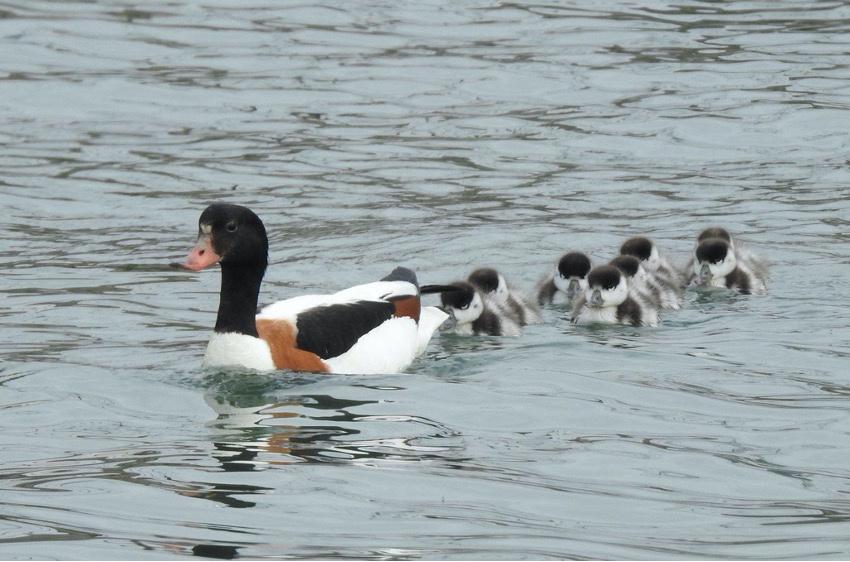 Shelducks - Robert Seymour
Shelducks - Robert Seymour
We would like to thank the following organisations and people who have helped bring this incredible photography book together and made it a reality.
Firstly the National Lottery Heritage Fund and its players – without such this Project ‘Secrets of the Solent’ could not have come about. The Hampshire & Isle of Wight Wildlife Trust for carrying out the project and its work in galvanizing the local communities and volunteers.
Our main thanks go to the Marine Champion volunteers themselves, who not only were inspired to talk about our Solent’s marine life but to do something for it, to be positive and proactive in its protection.
Thank you to the following volunteers whose contributions in photographs, research, time and writing have made all the difference and brought about this fantastic book. We are proud.
Eric Woodgate, Toby Colwell, Elaine Hammell, Robert Seymour, Pete Johnstone, Theo Vickers, Laura Rydiard, Ben Constable, Sarah Finola Kirrane, Megan Derek, Jolene Orlowski , Gilly Croxford, Katie Finnimore, Laura Godleman, Rebecca Parks, Alison Mayor, Cathy Currie, Charlotte Teague, Emily Stroud, Joshua Clark.
